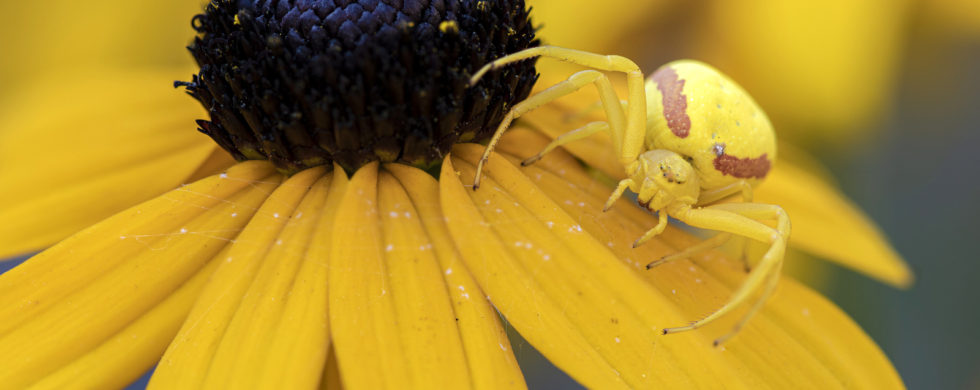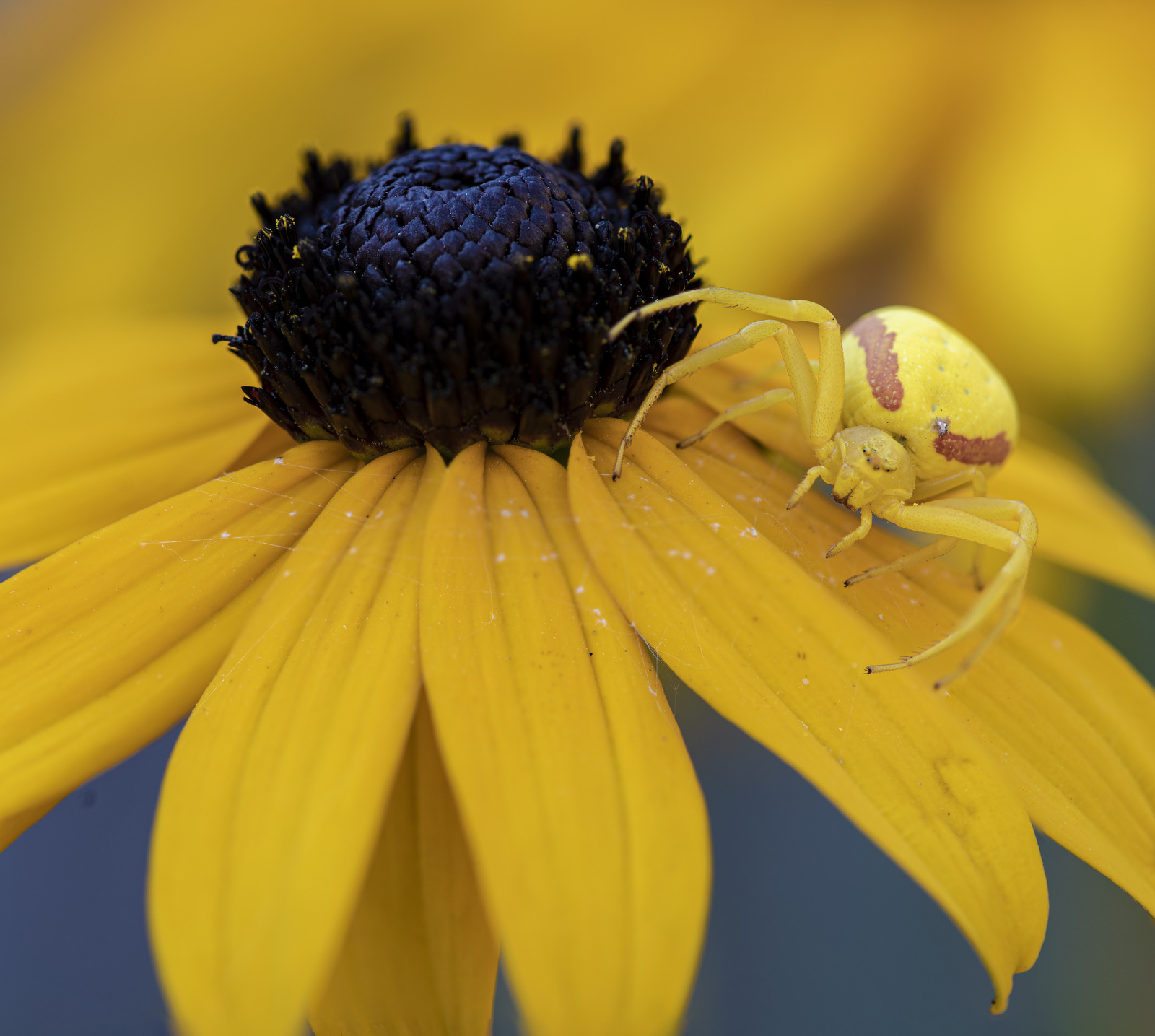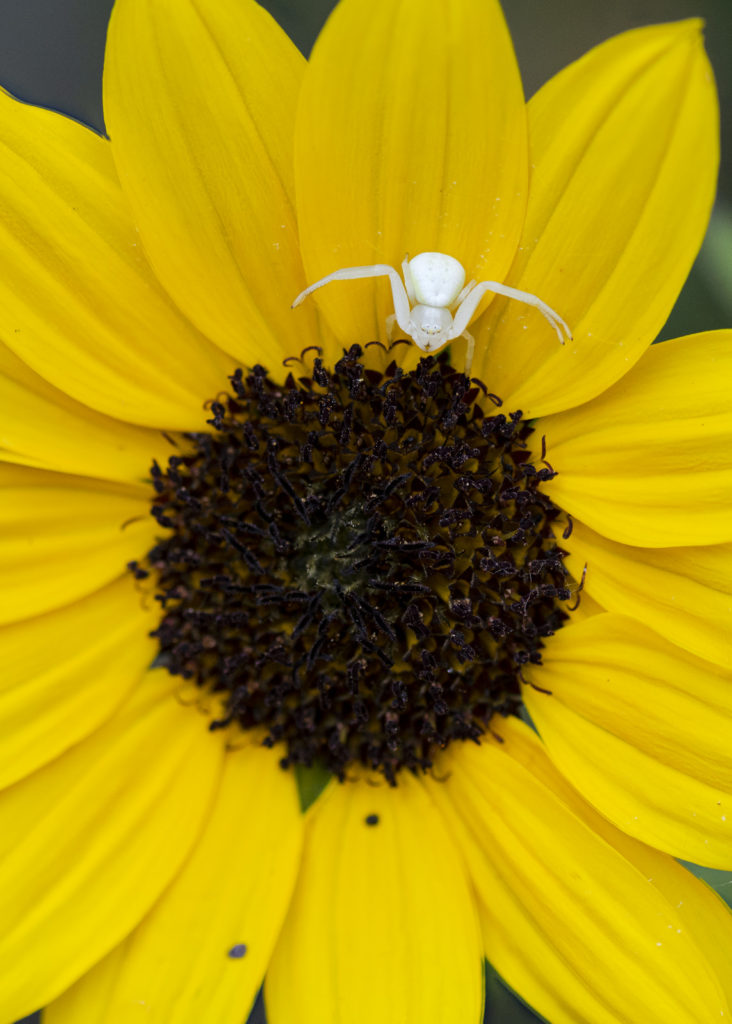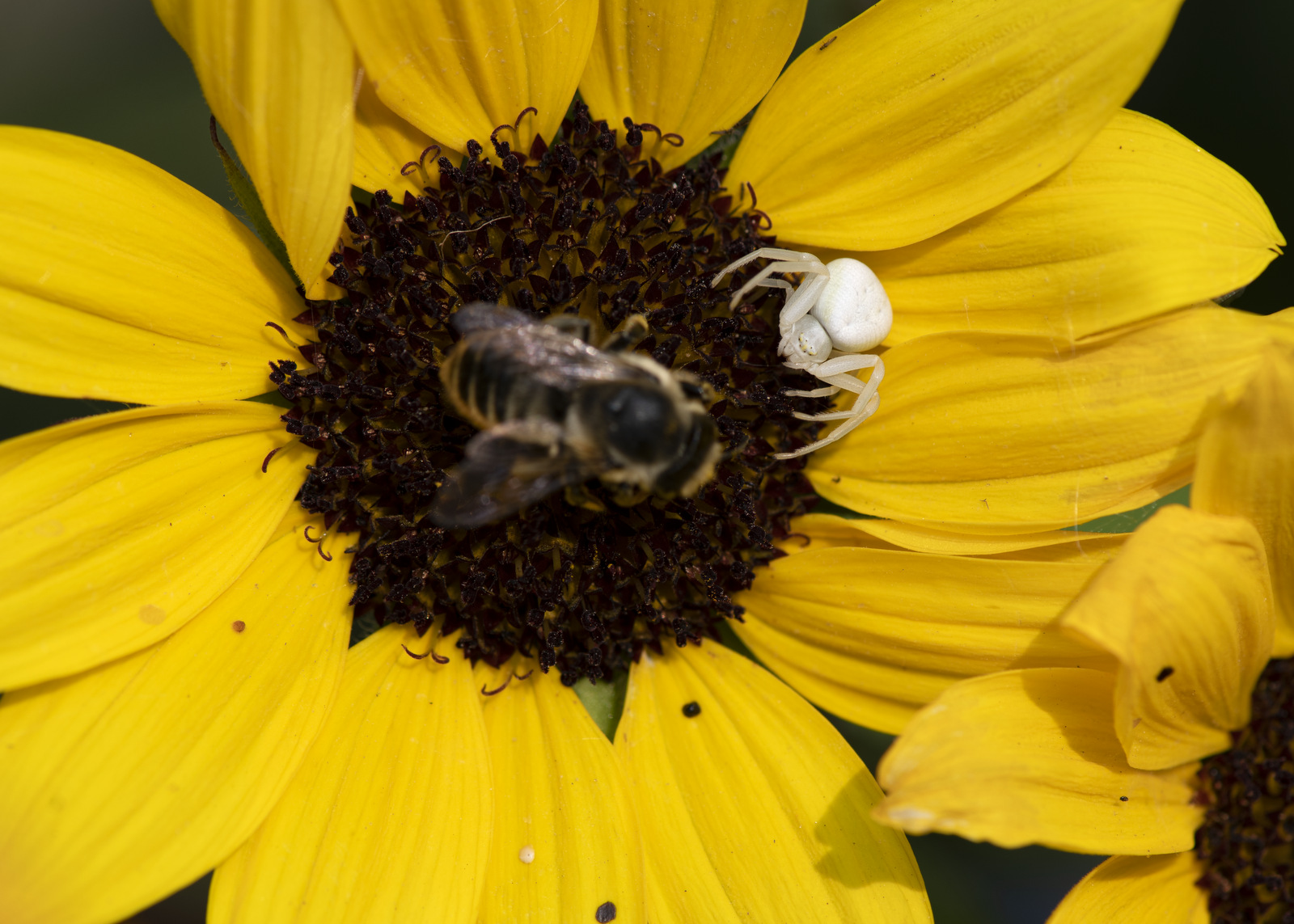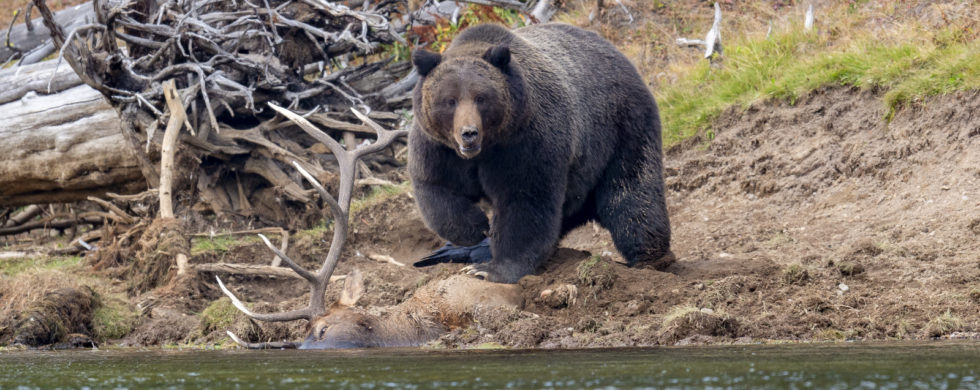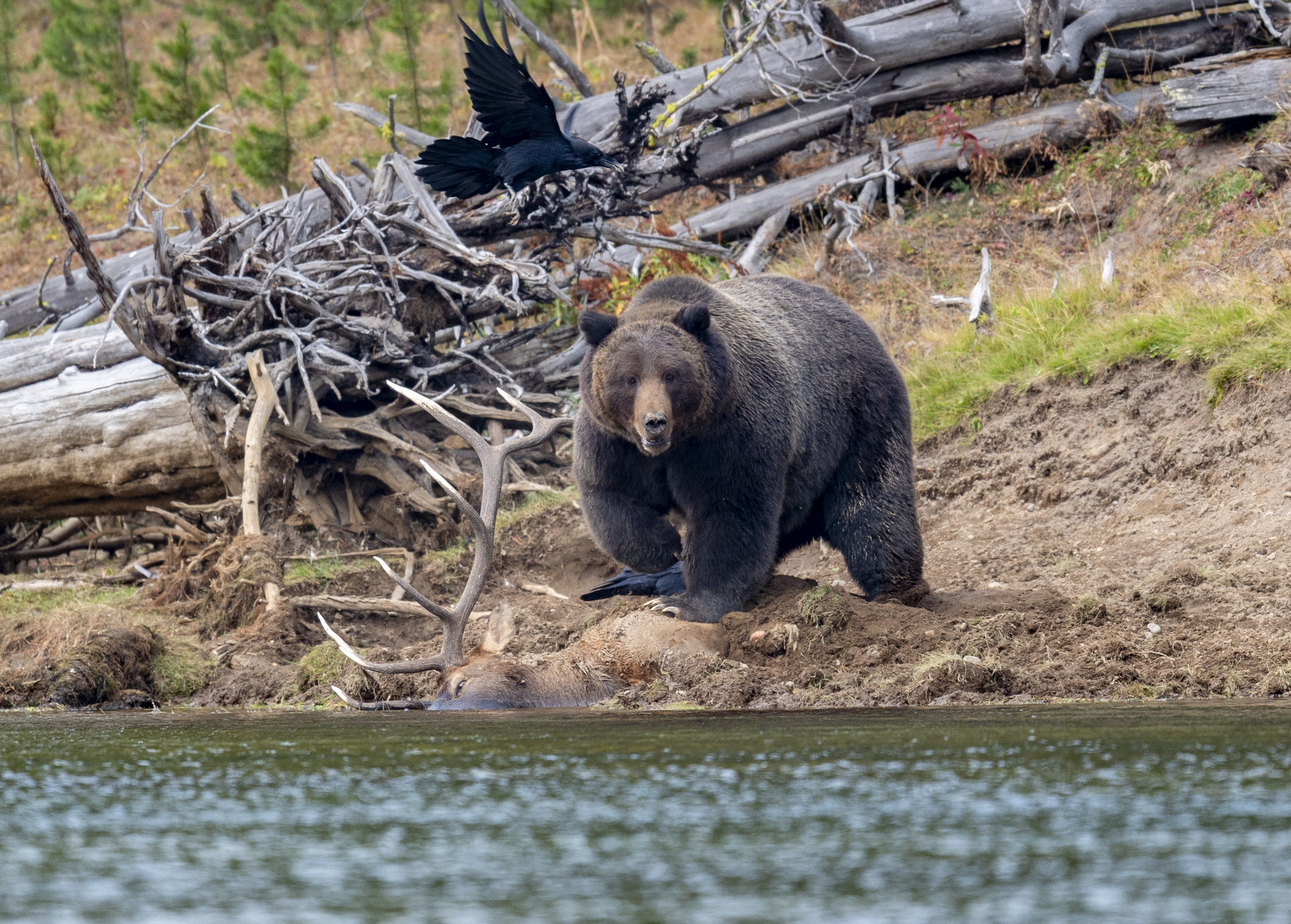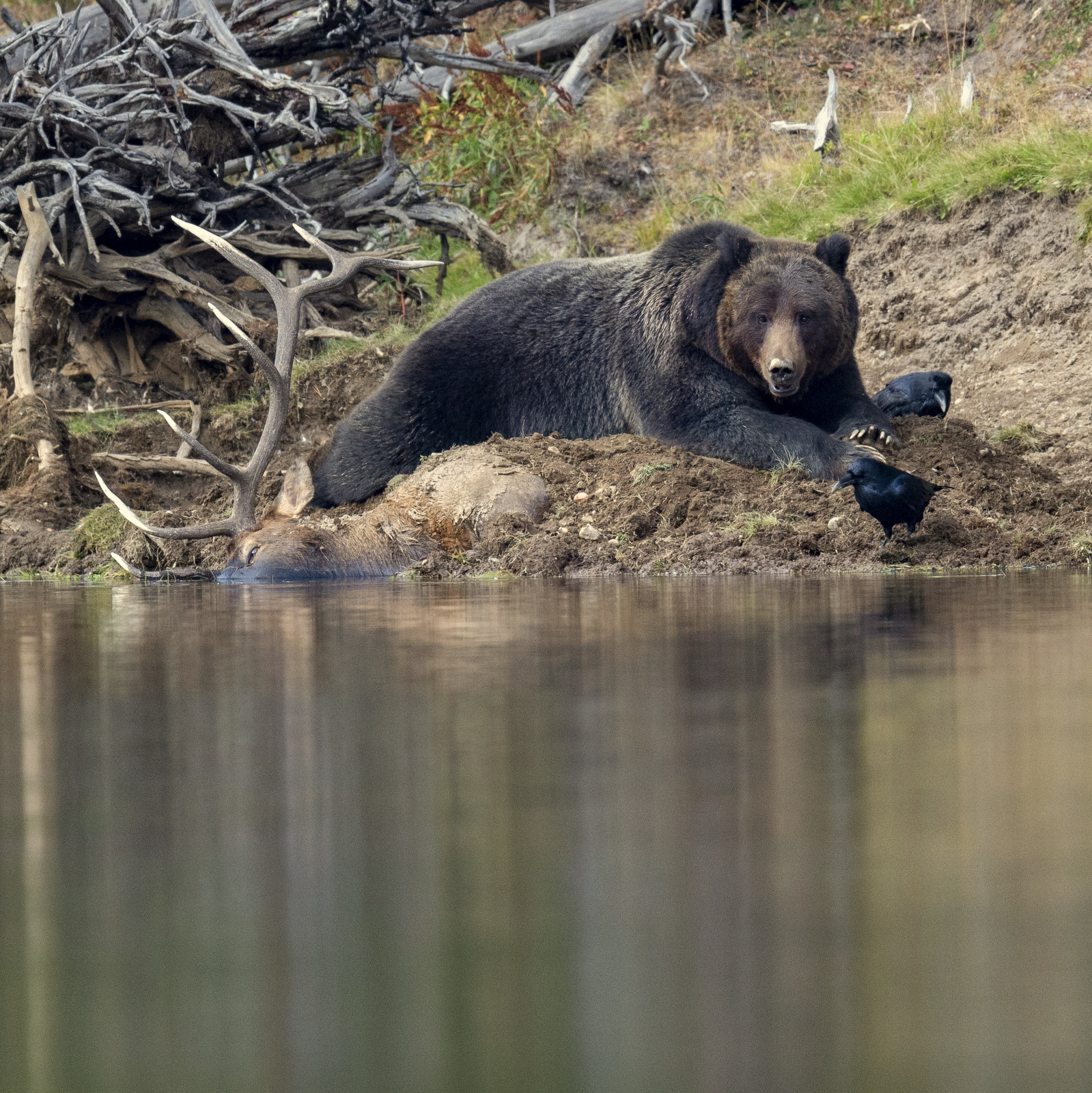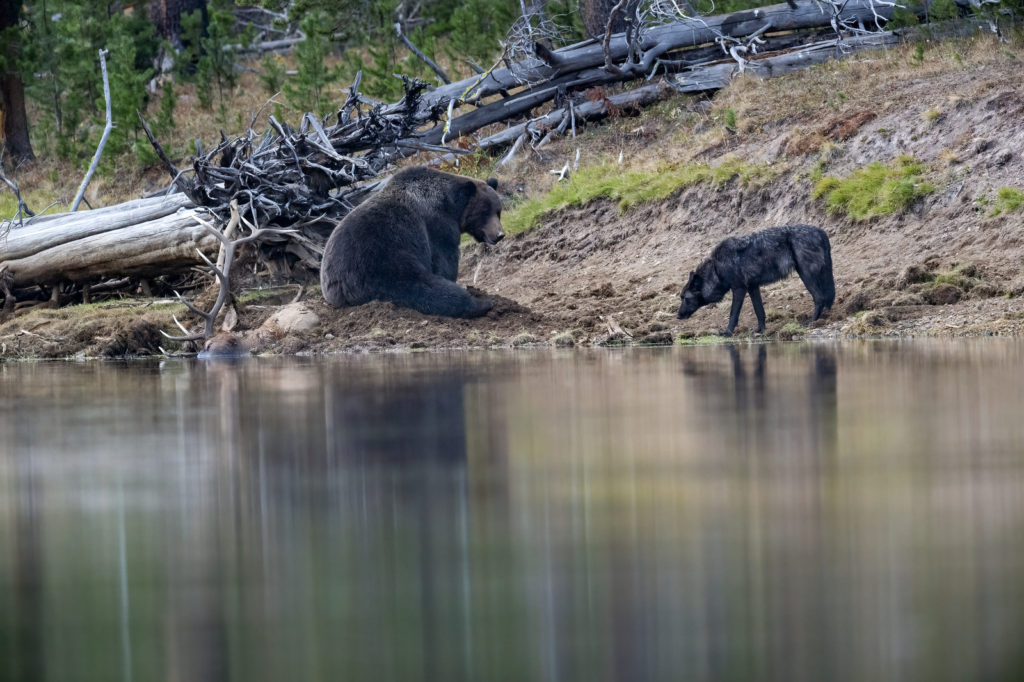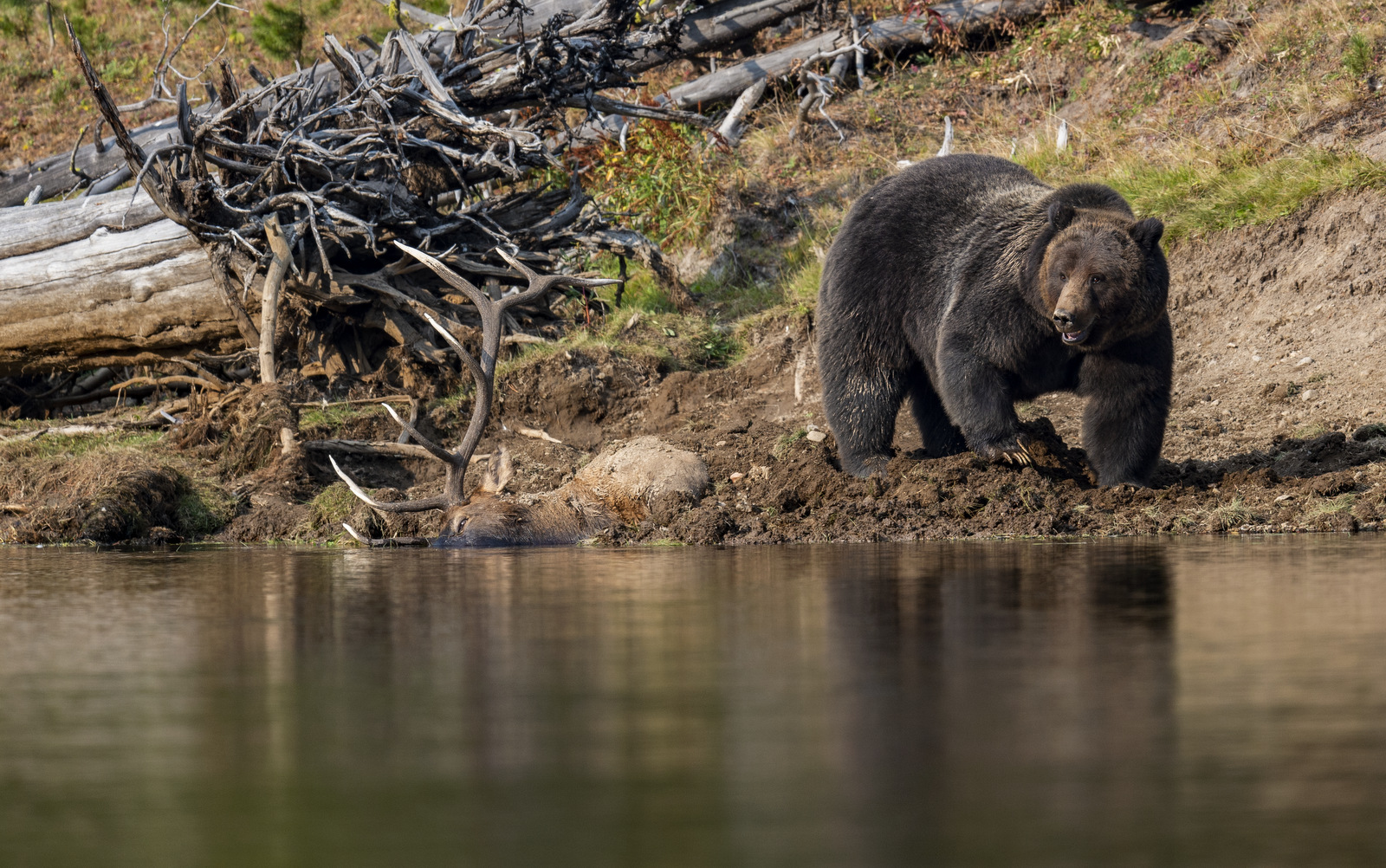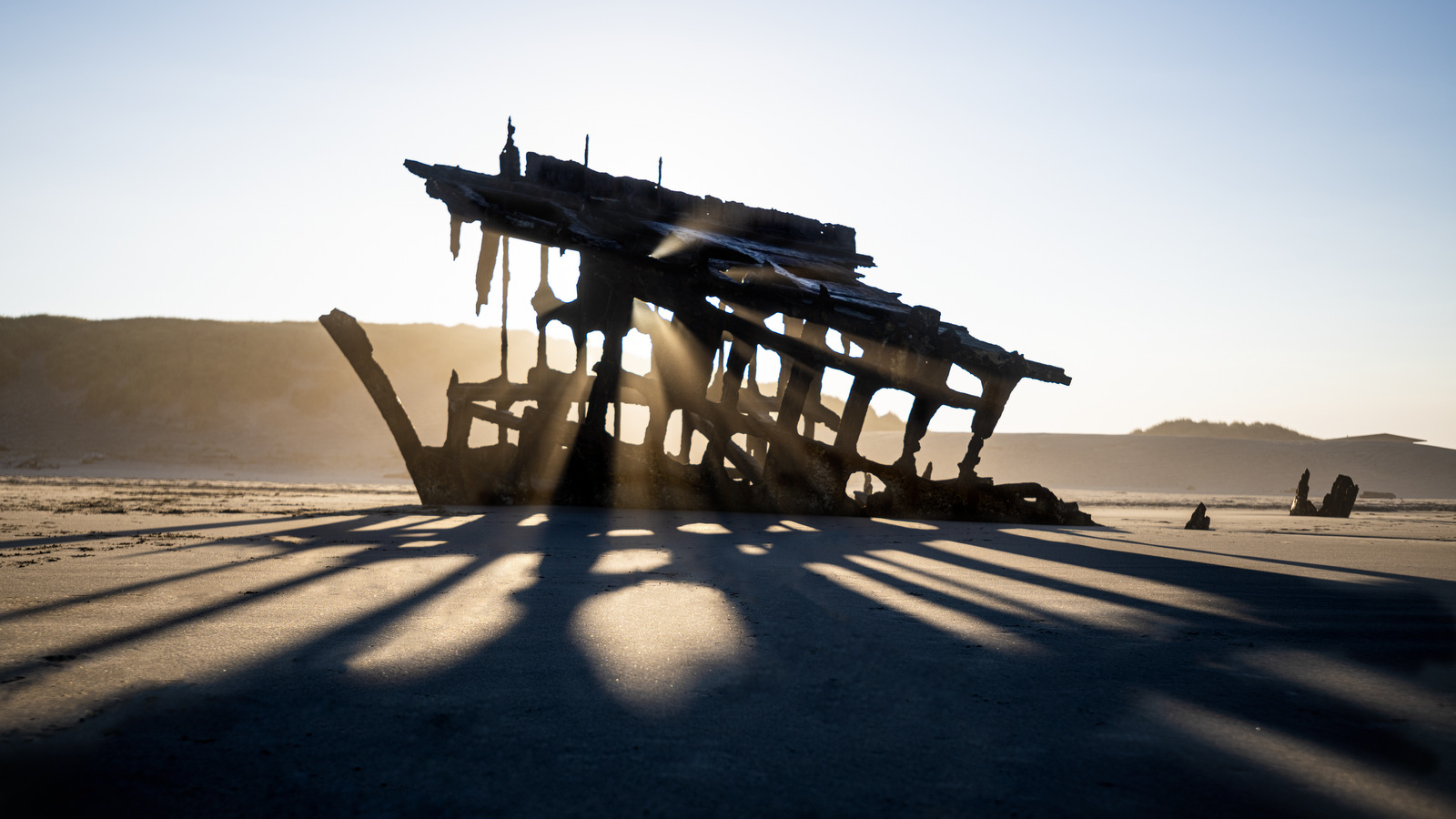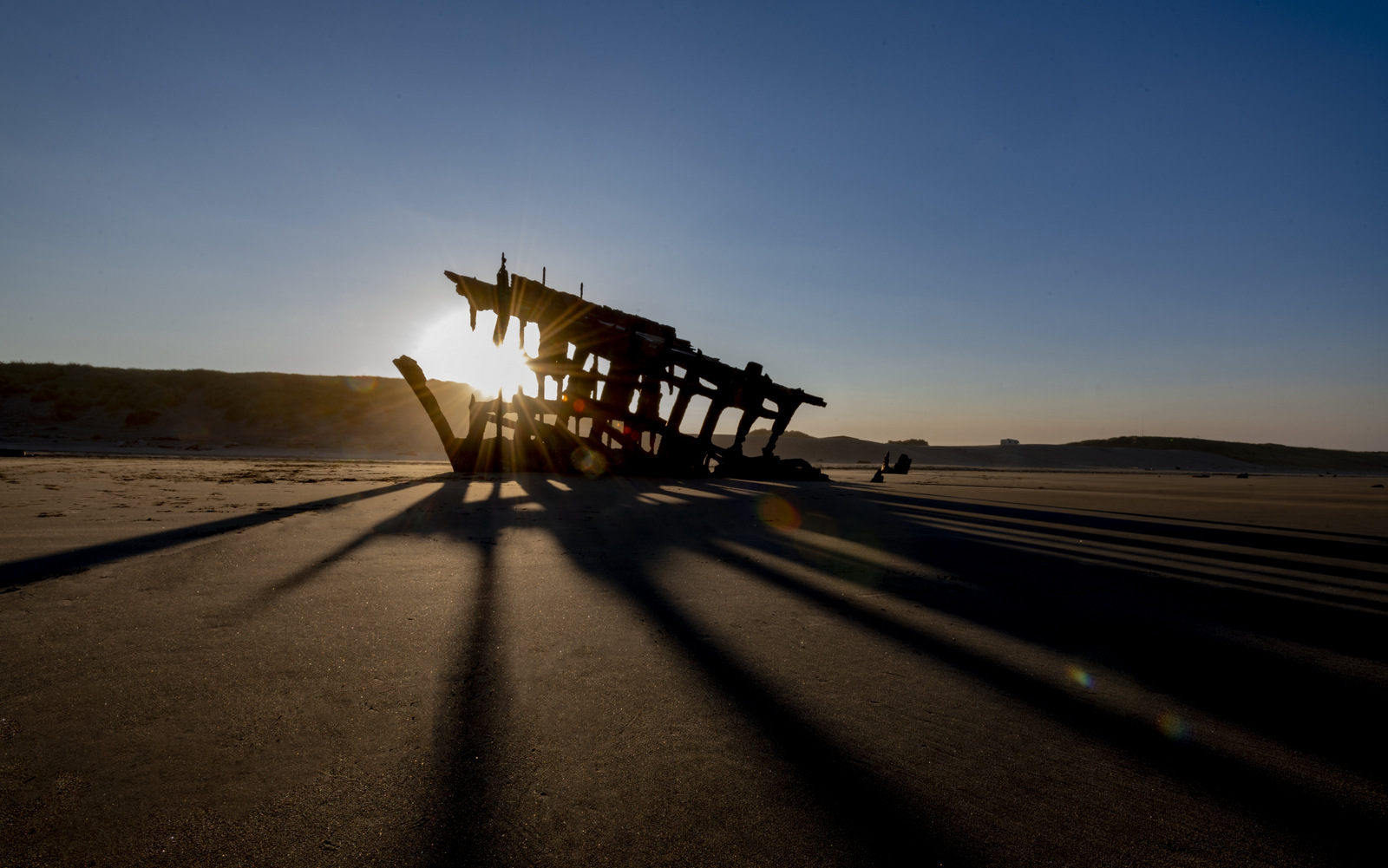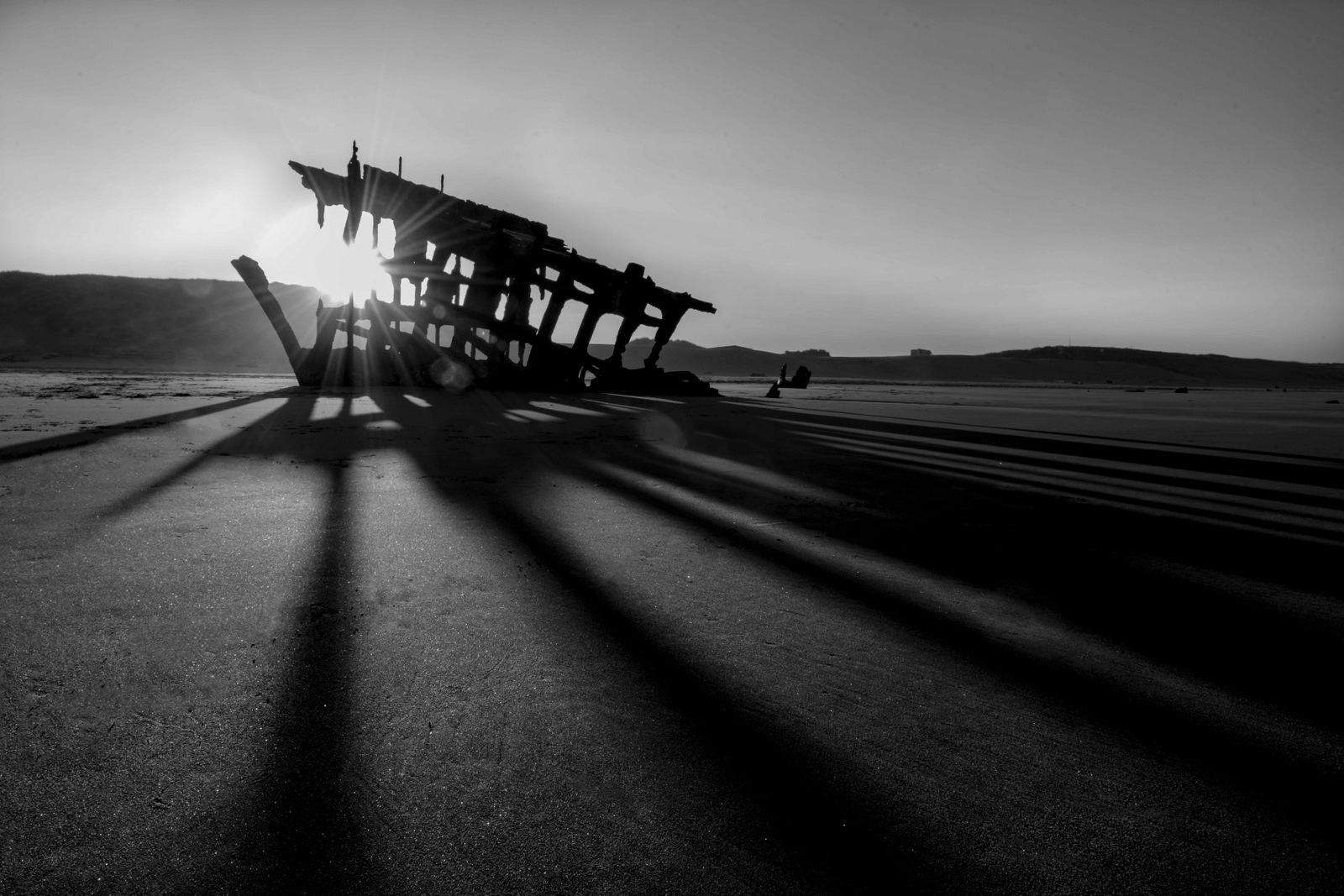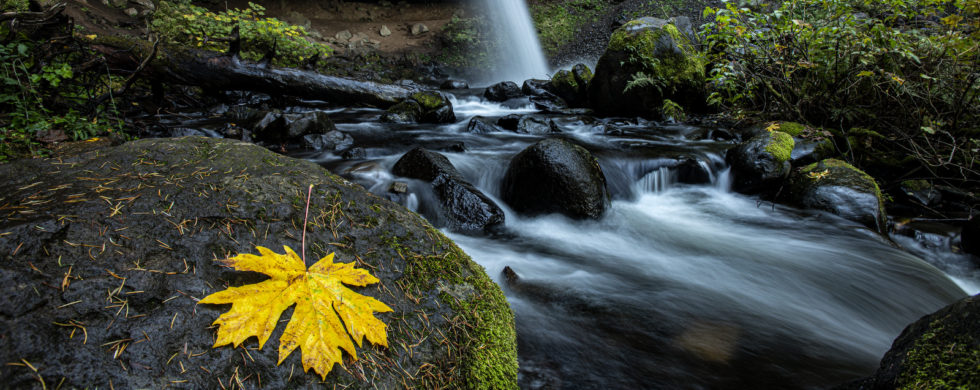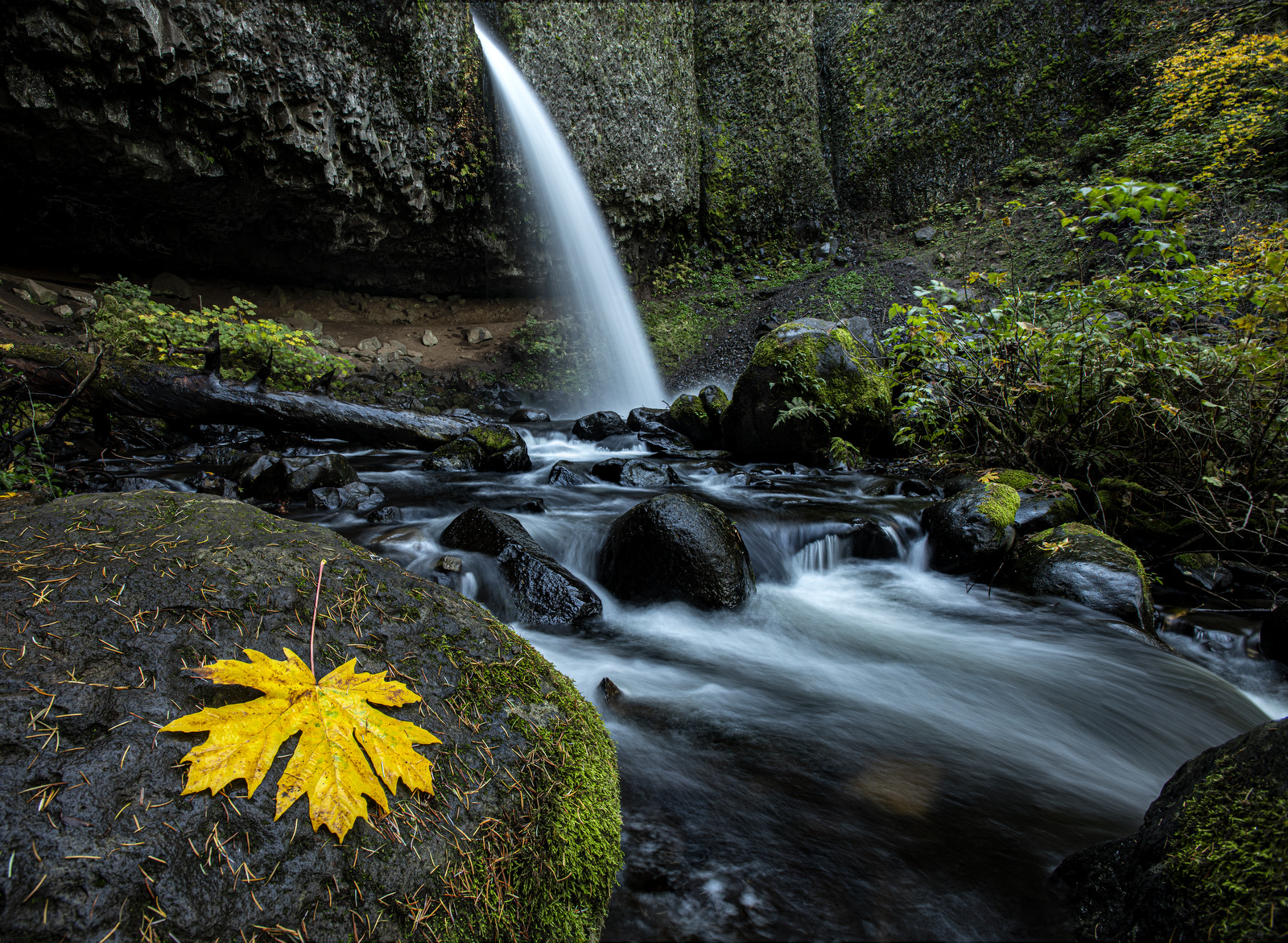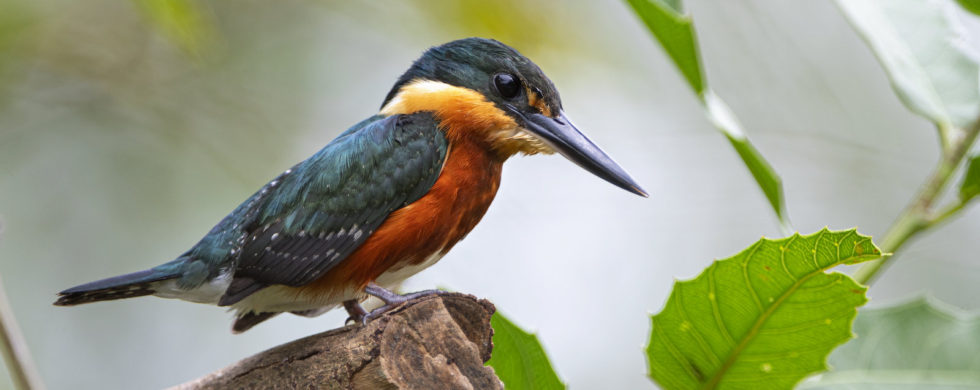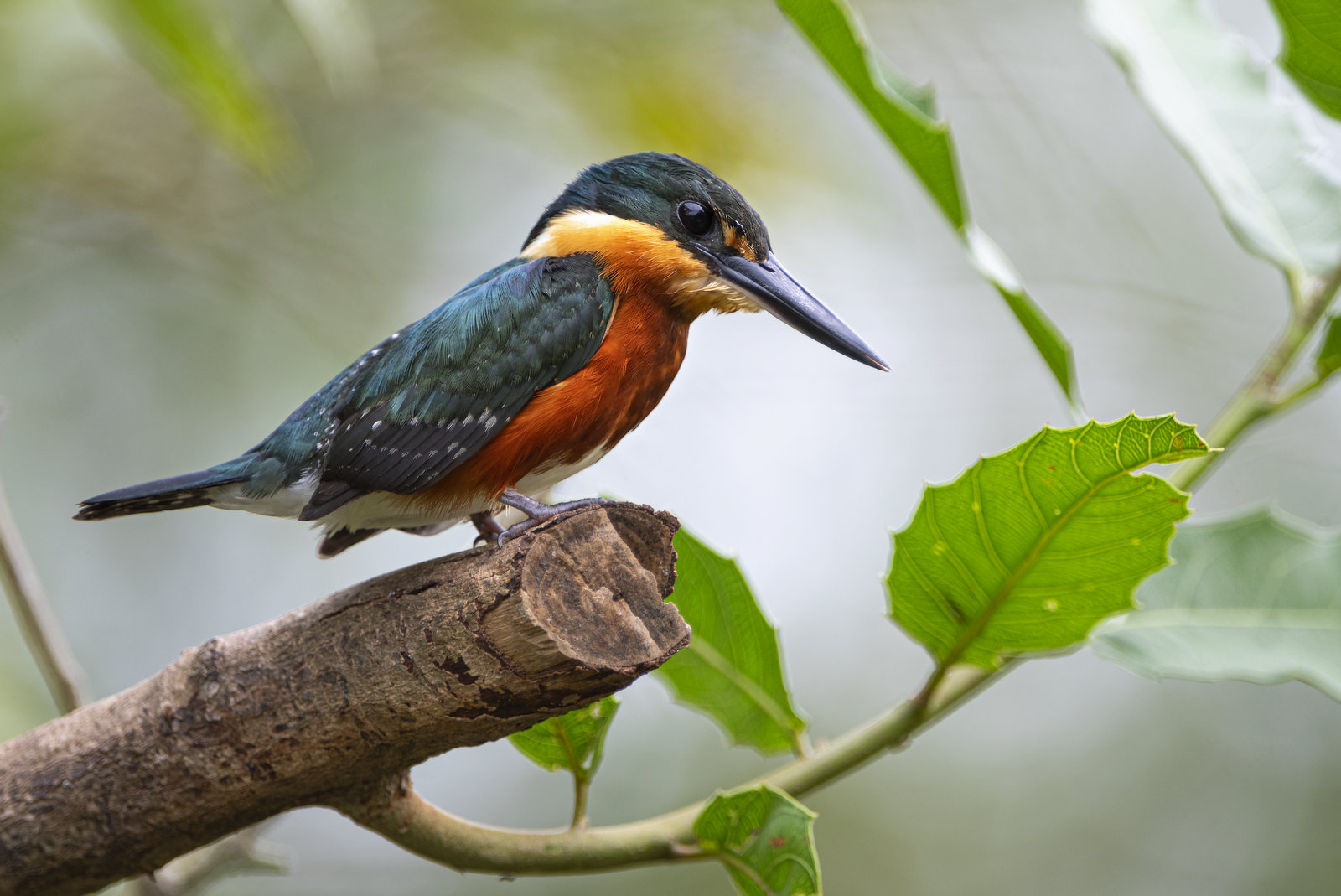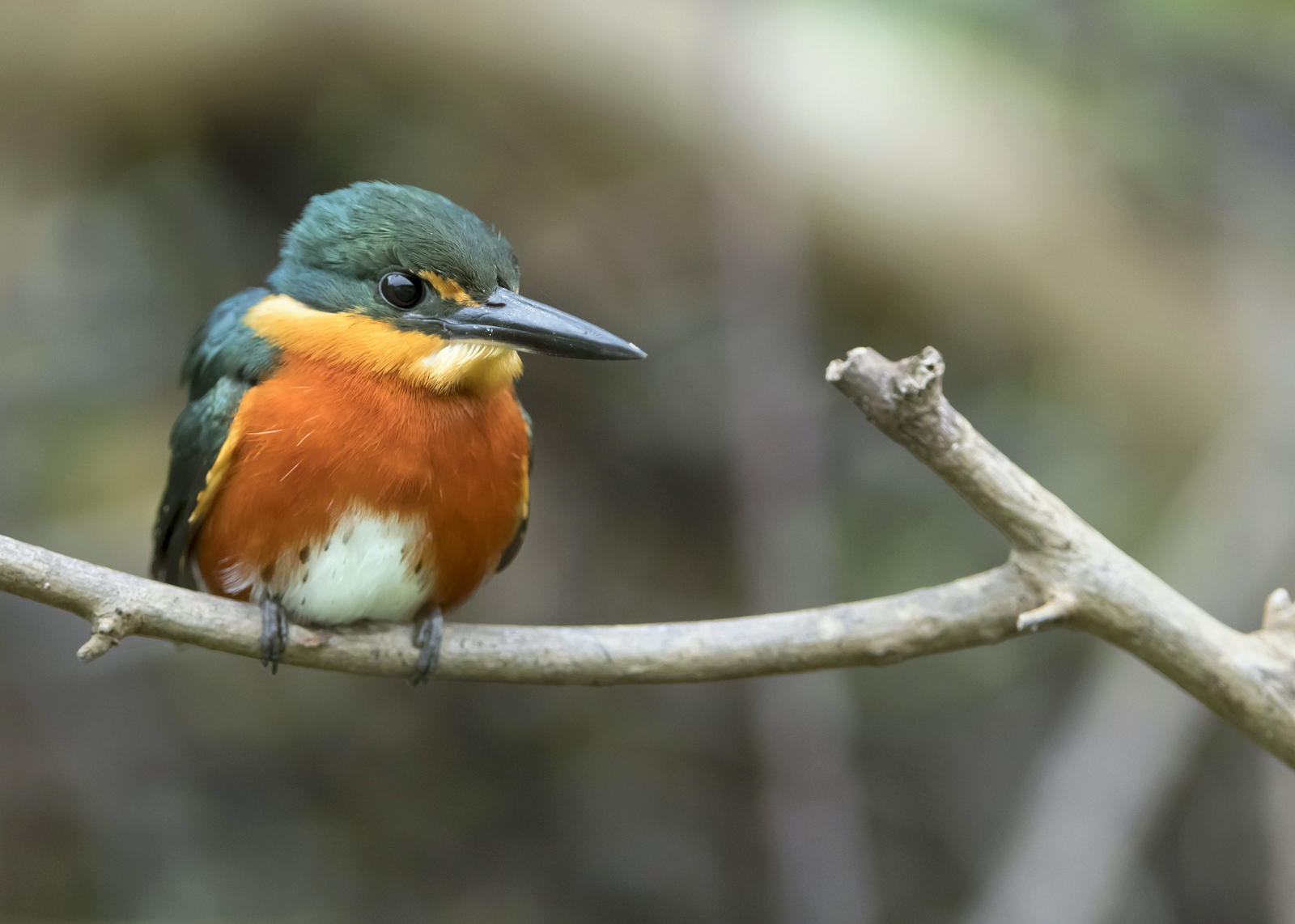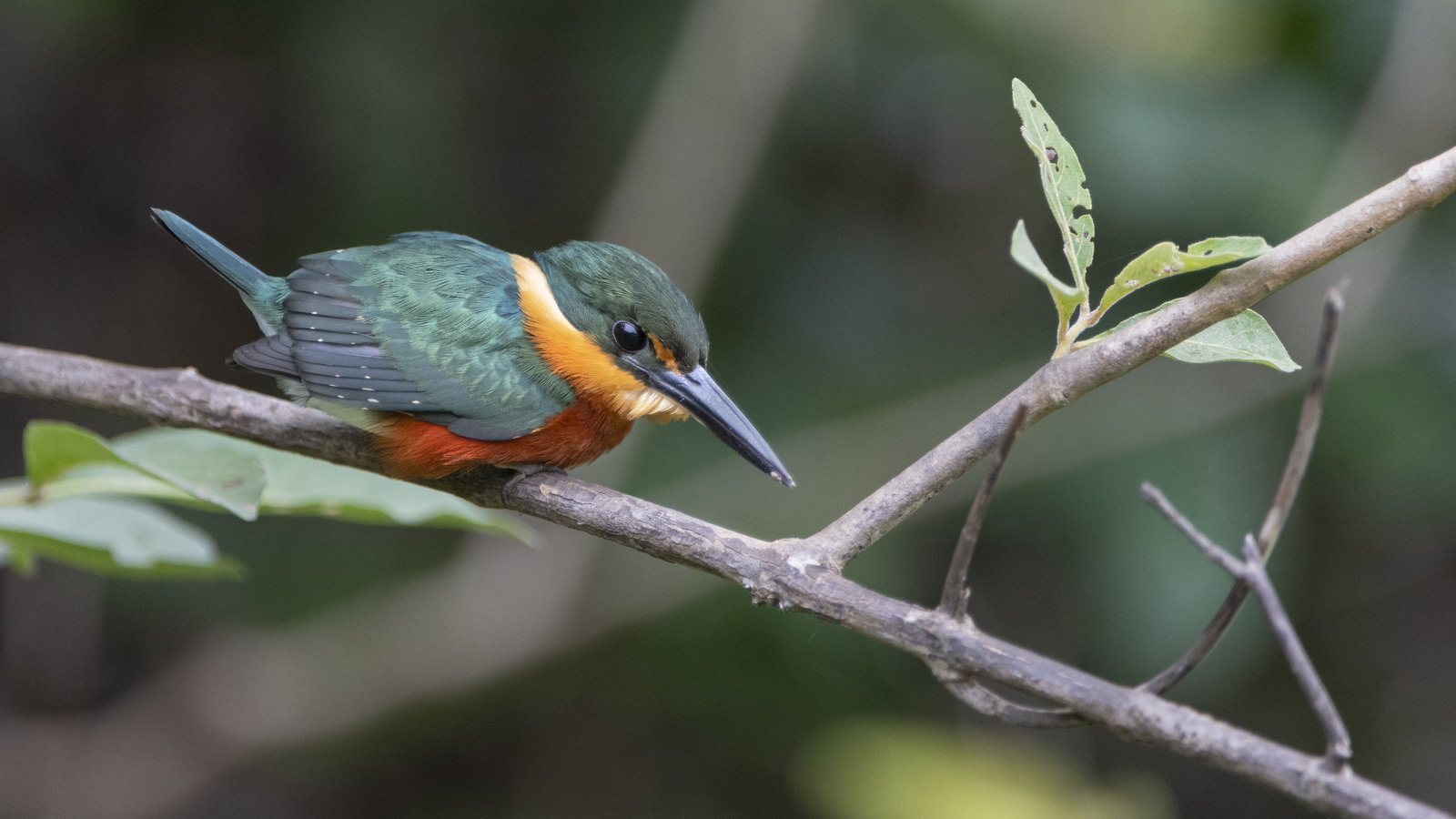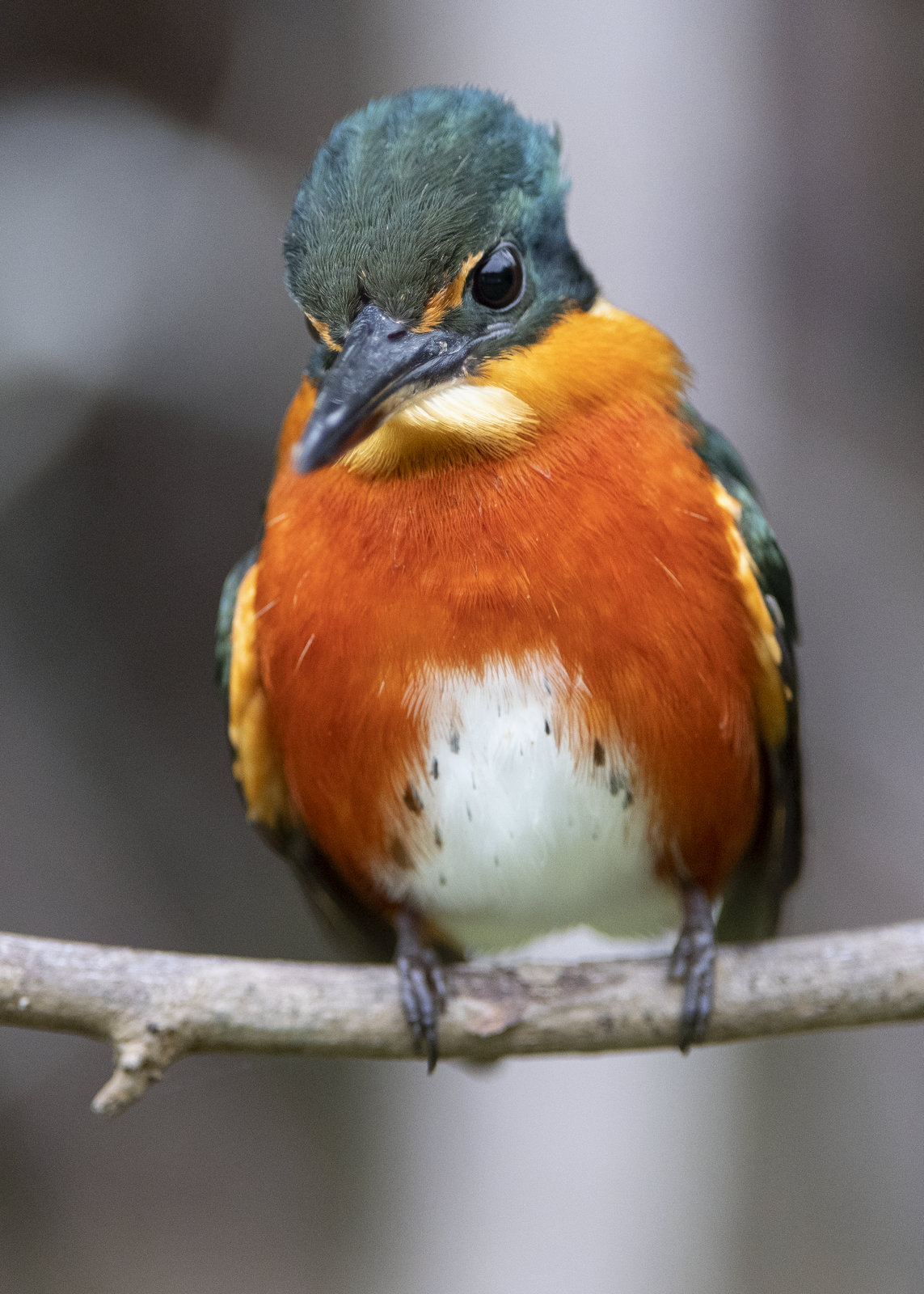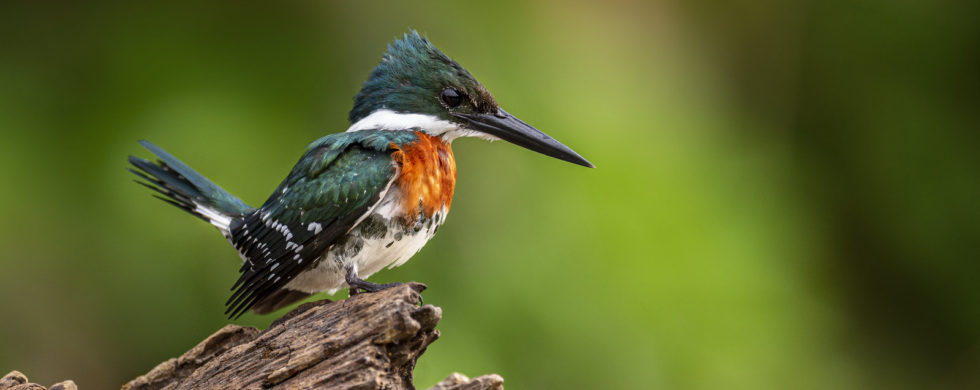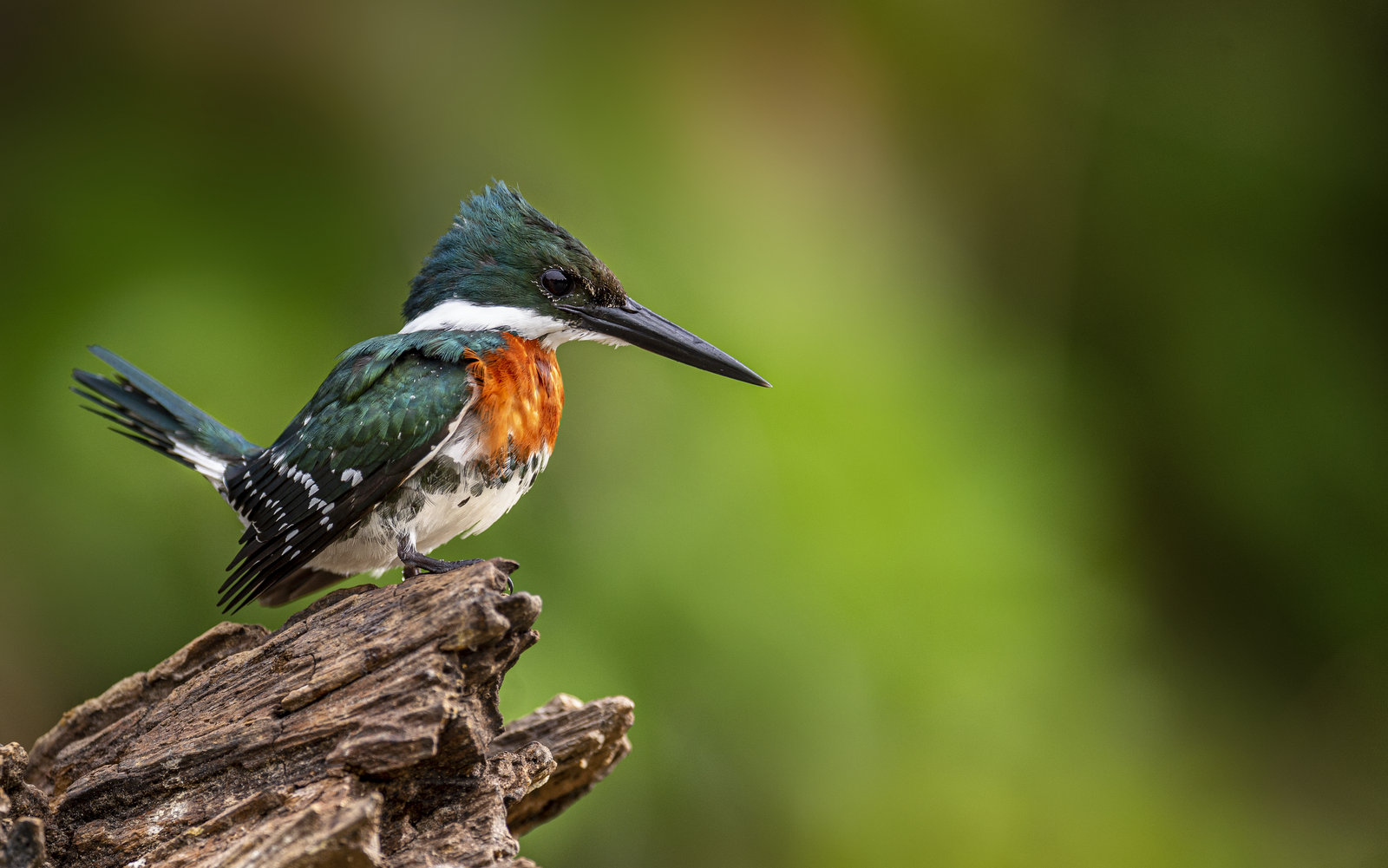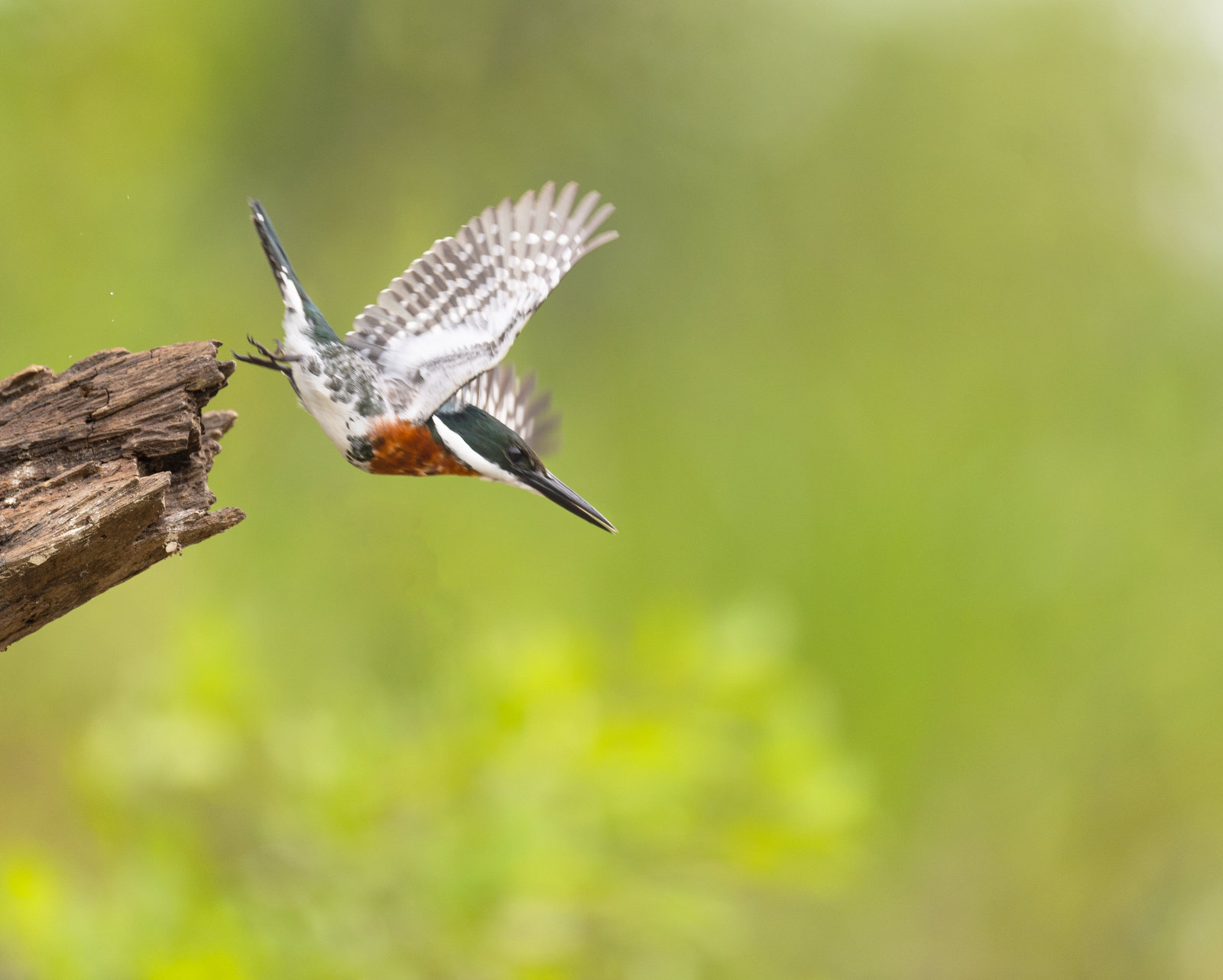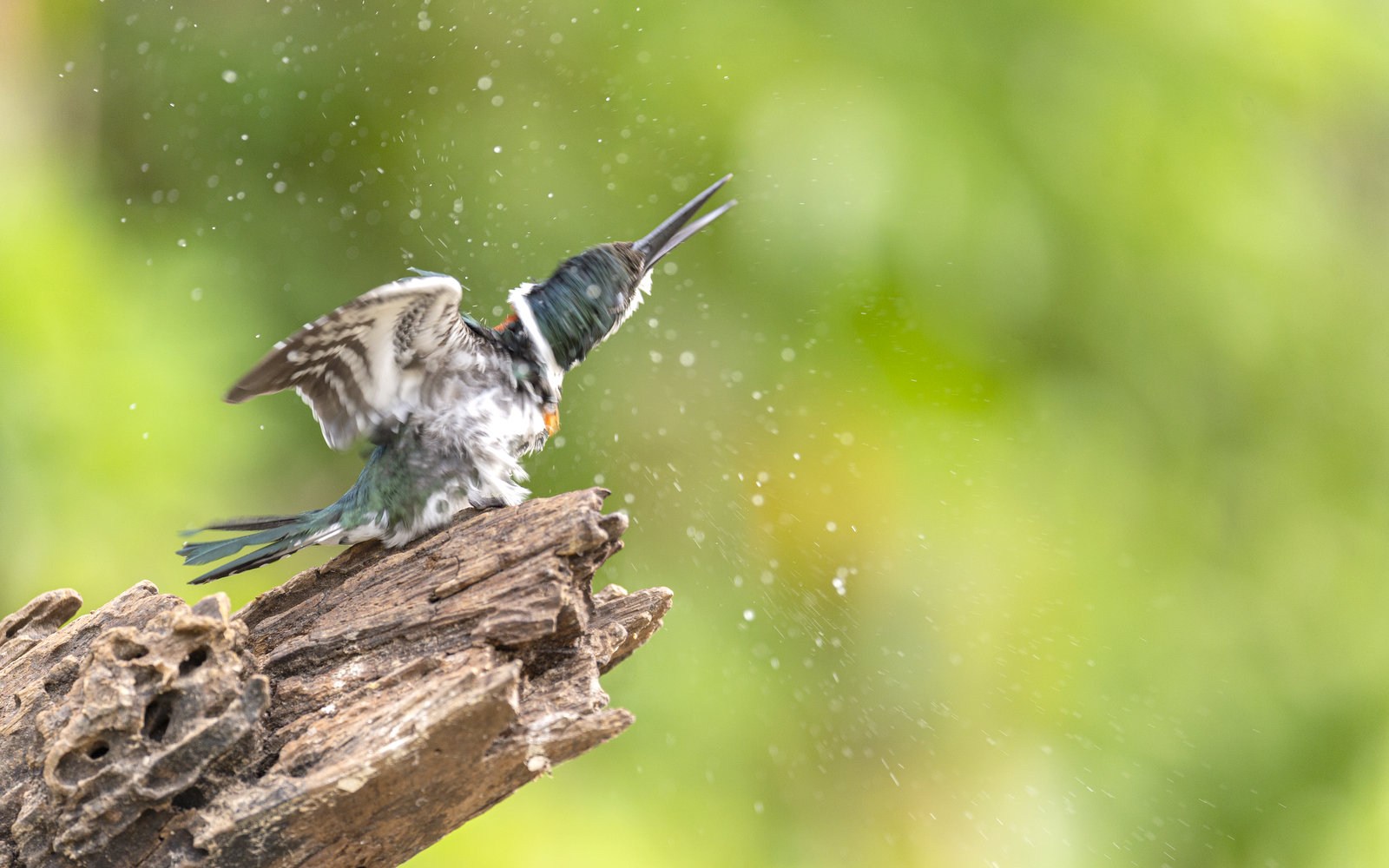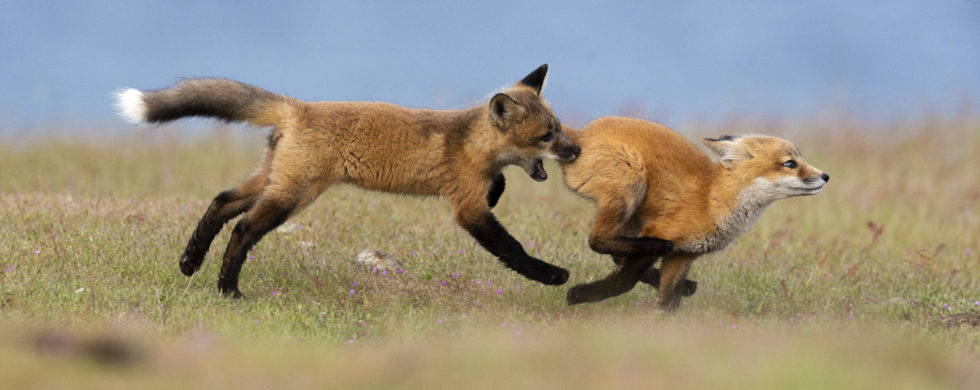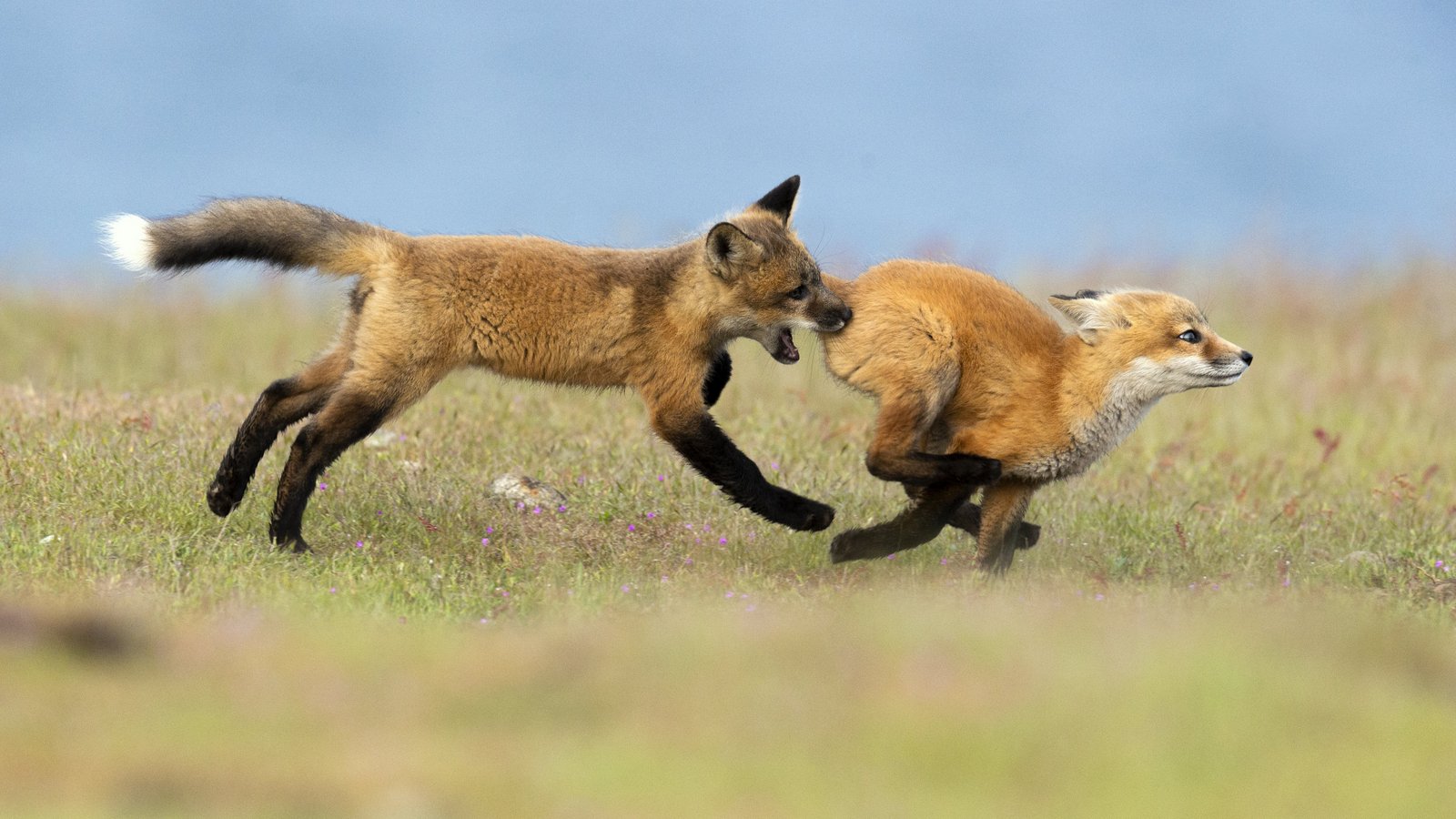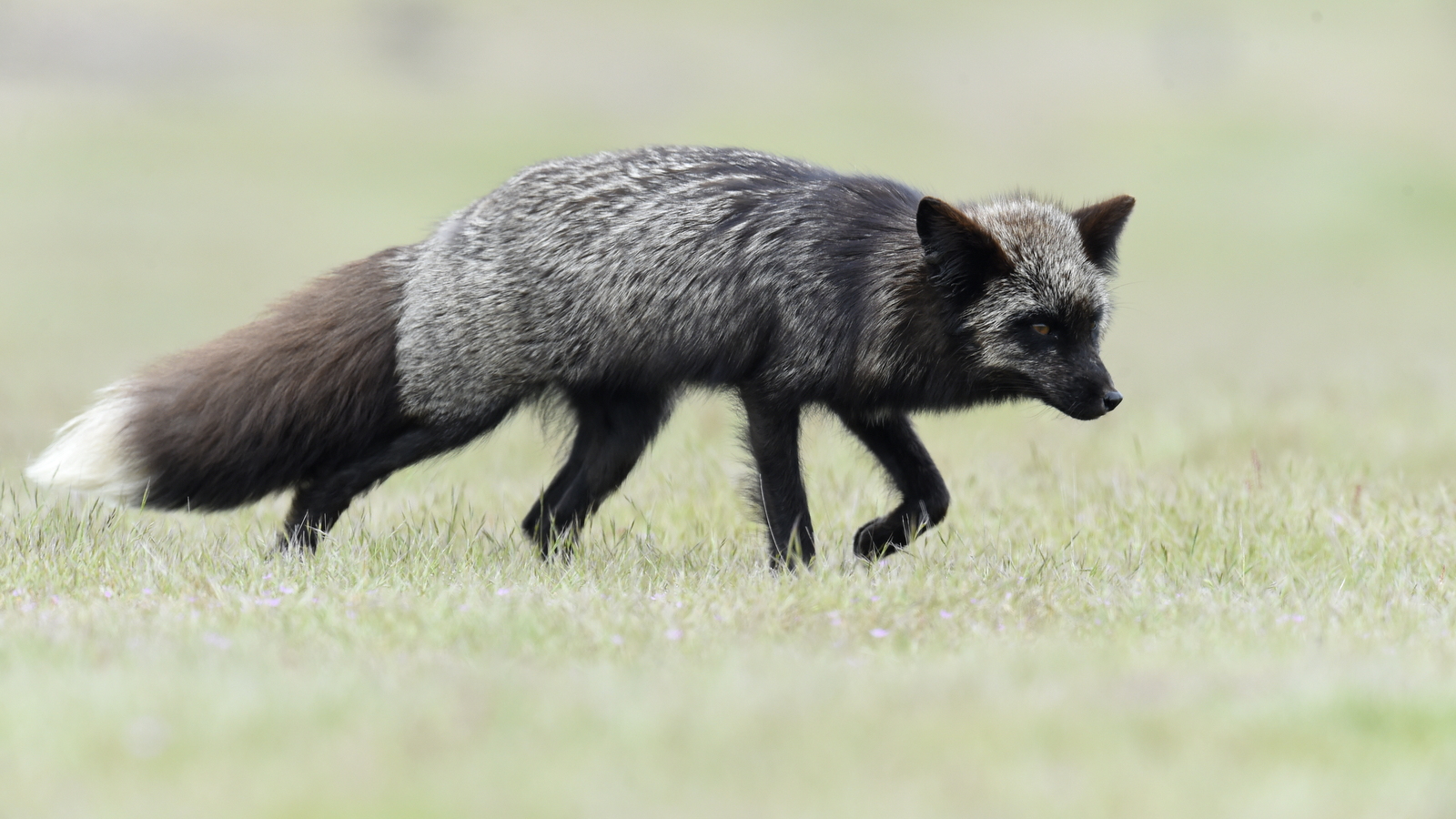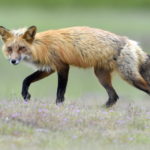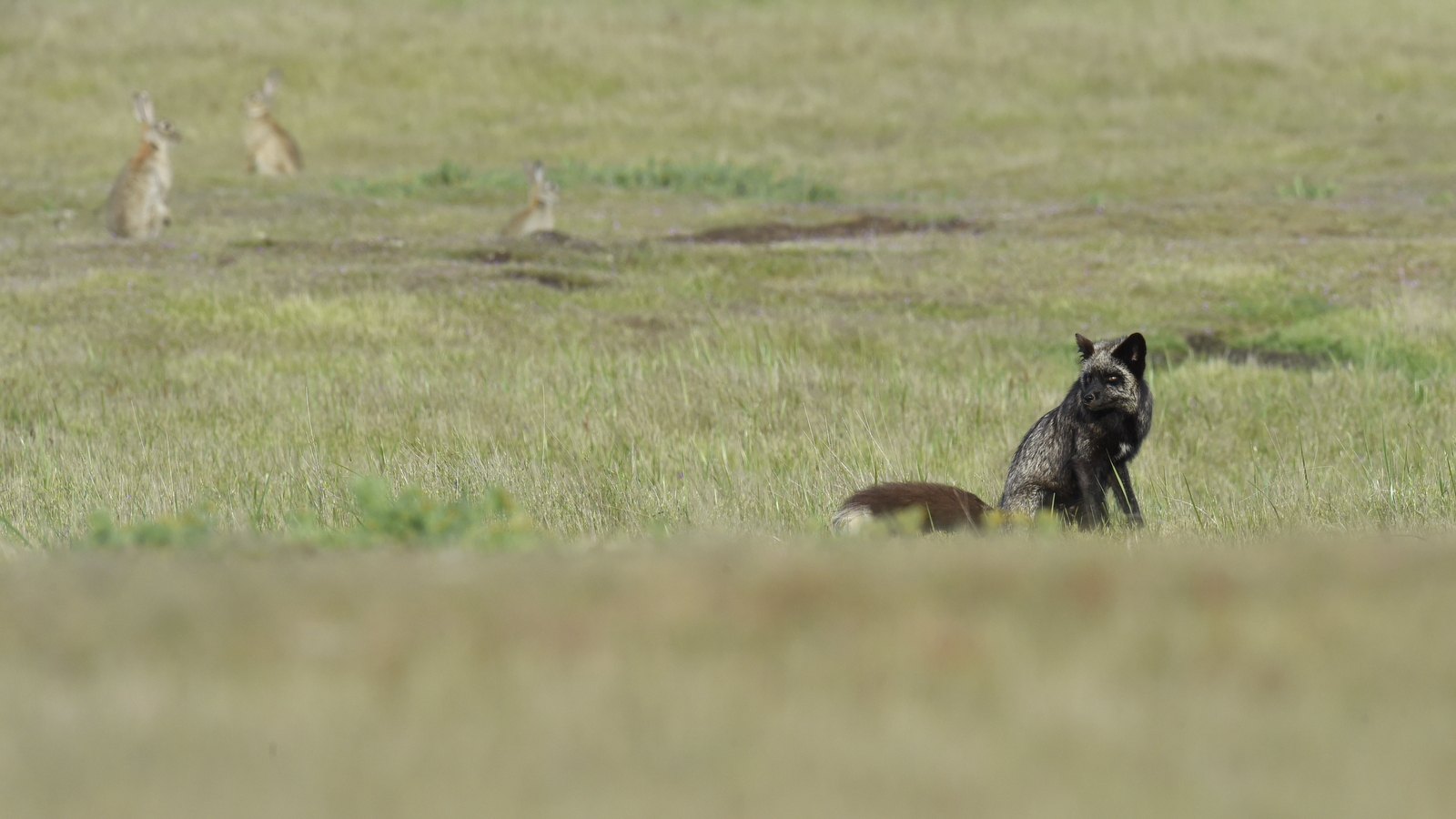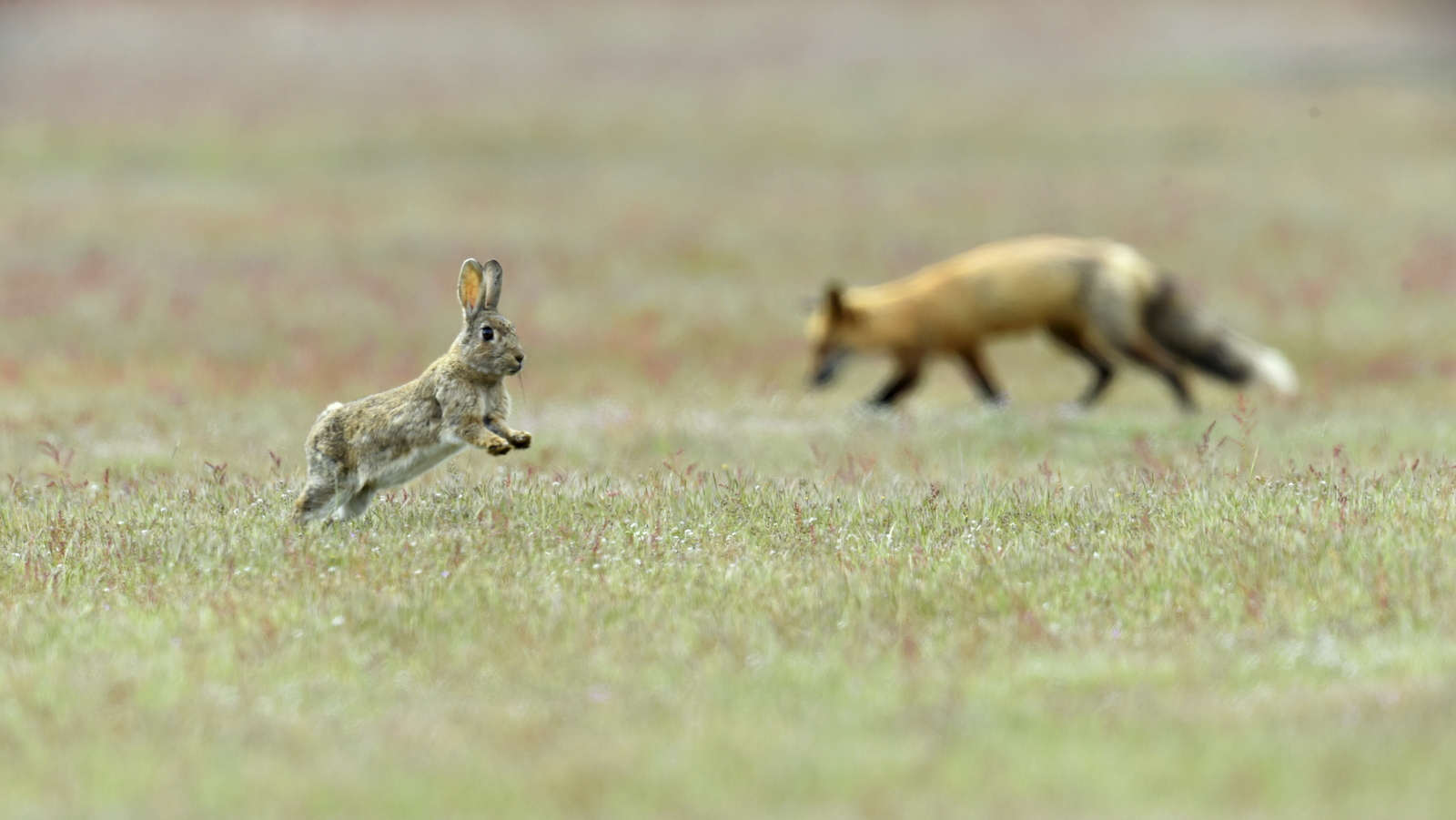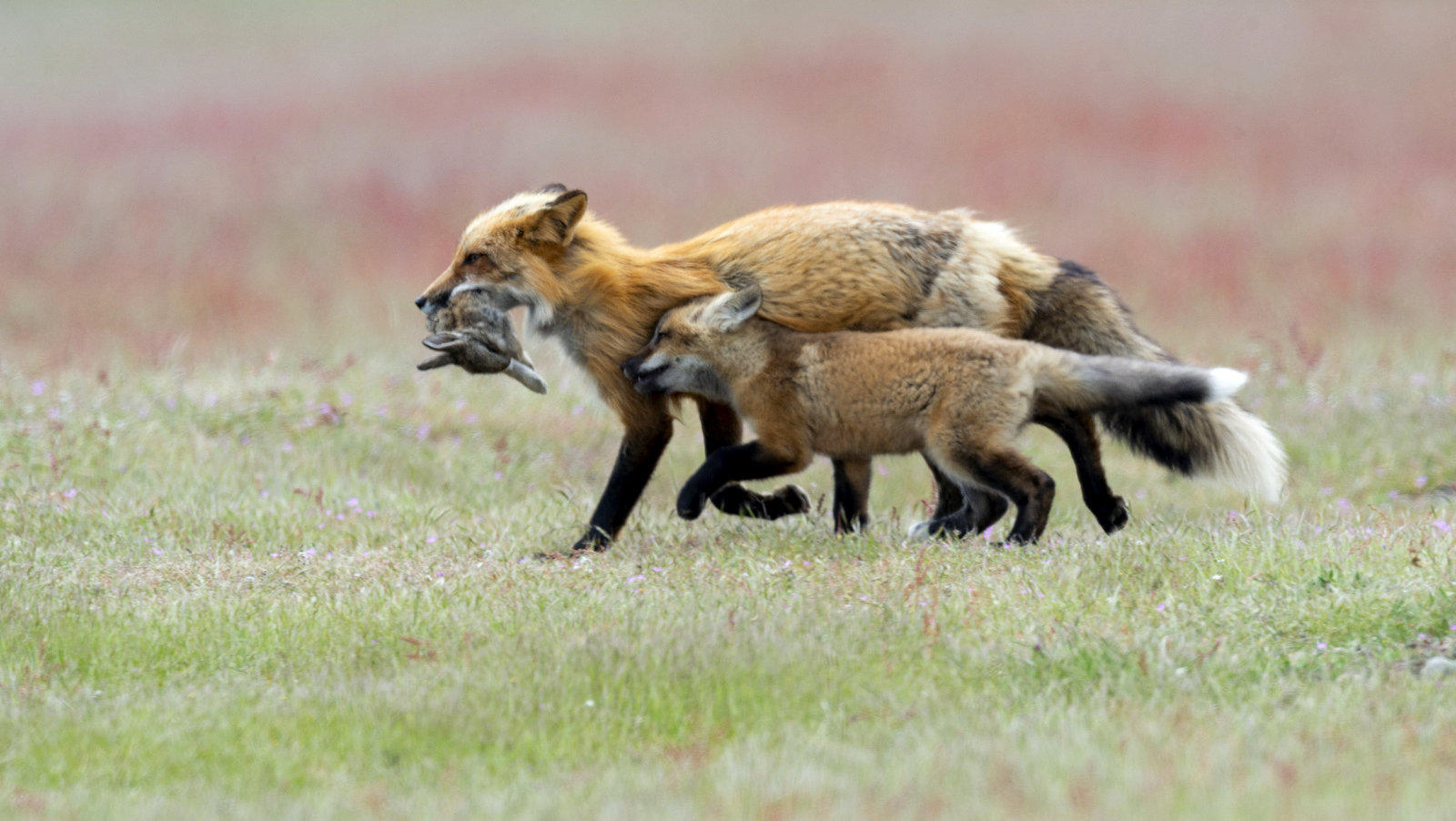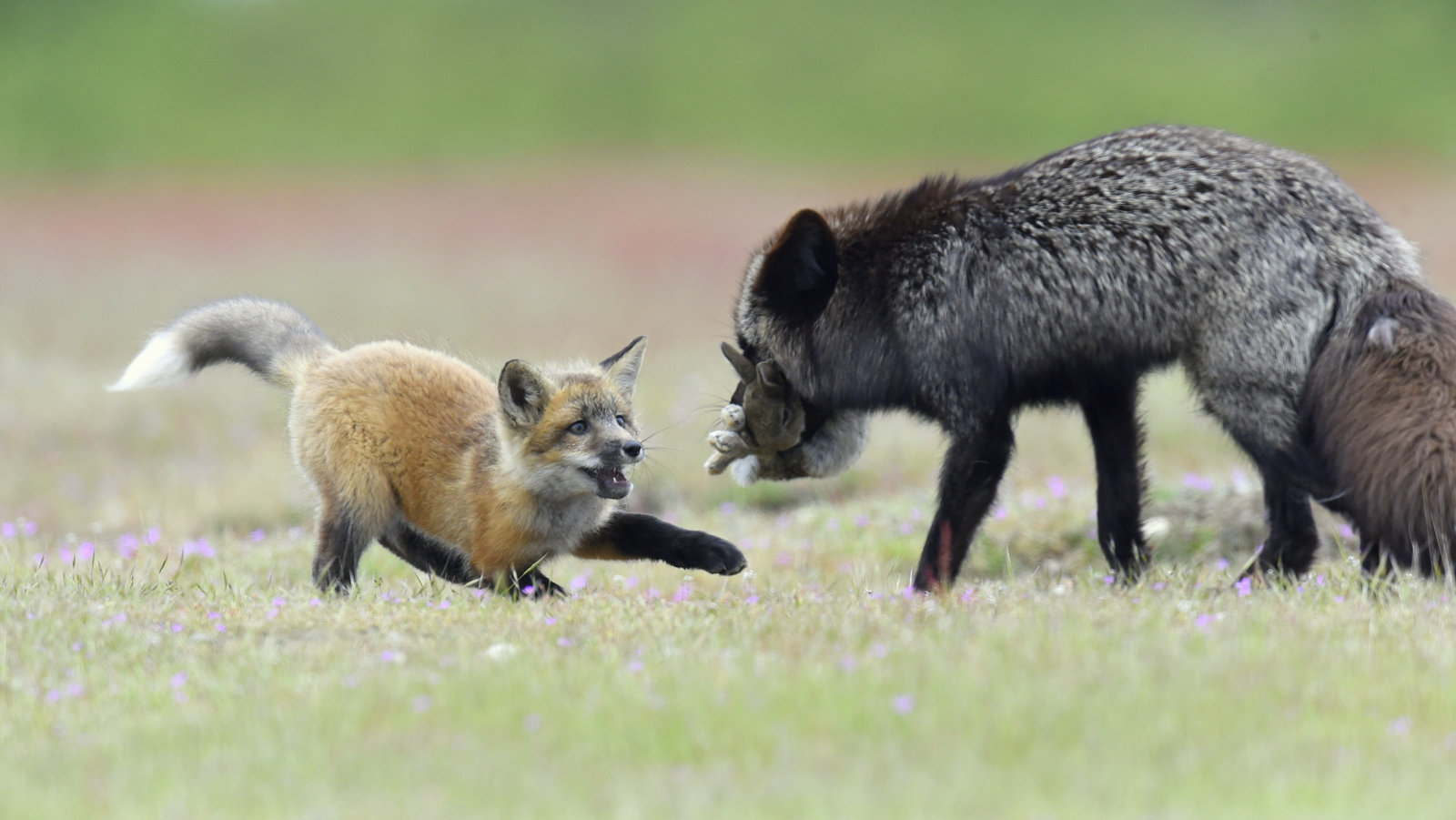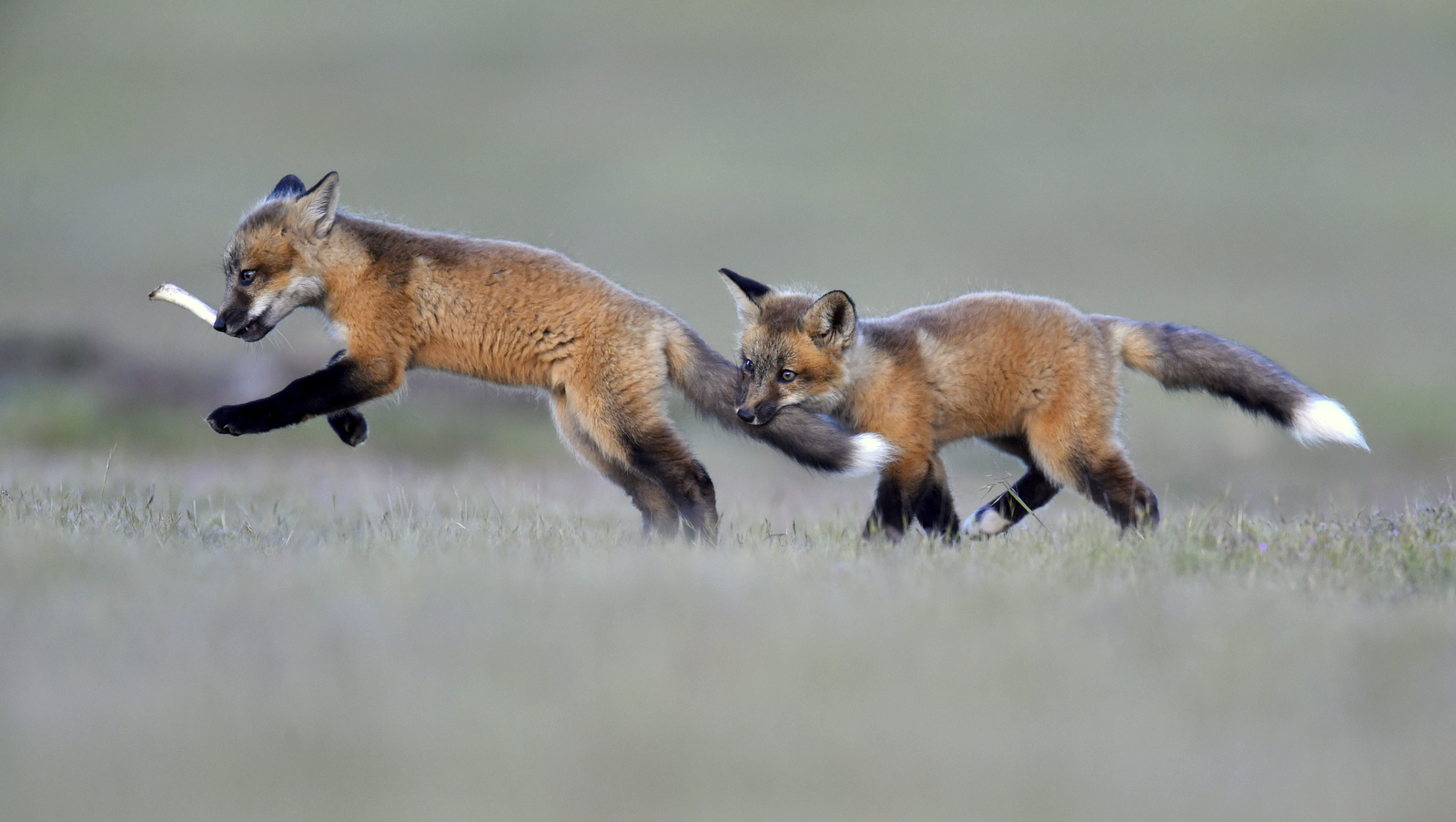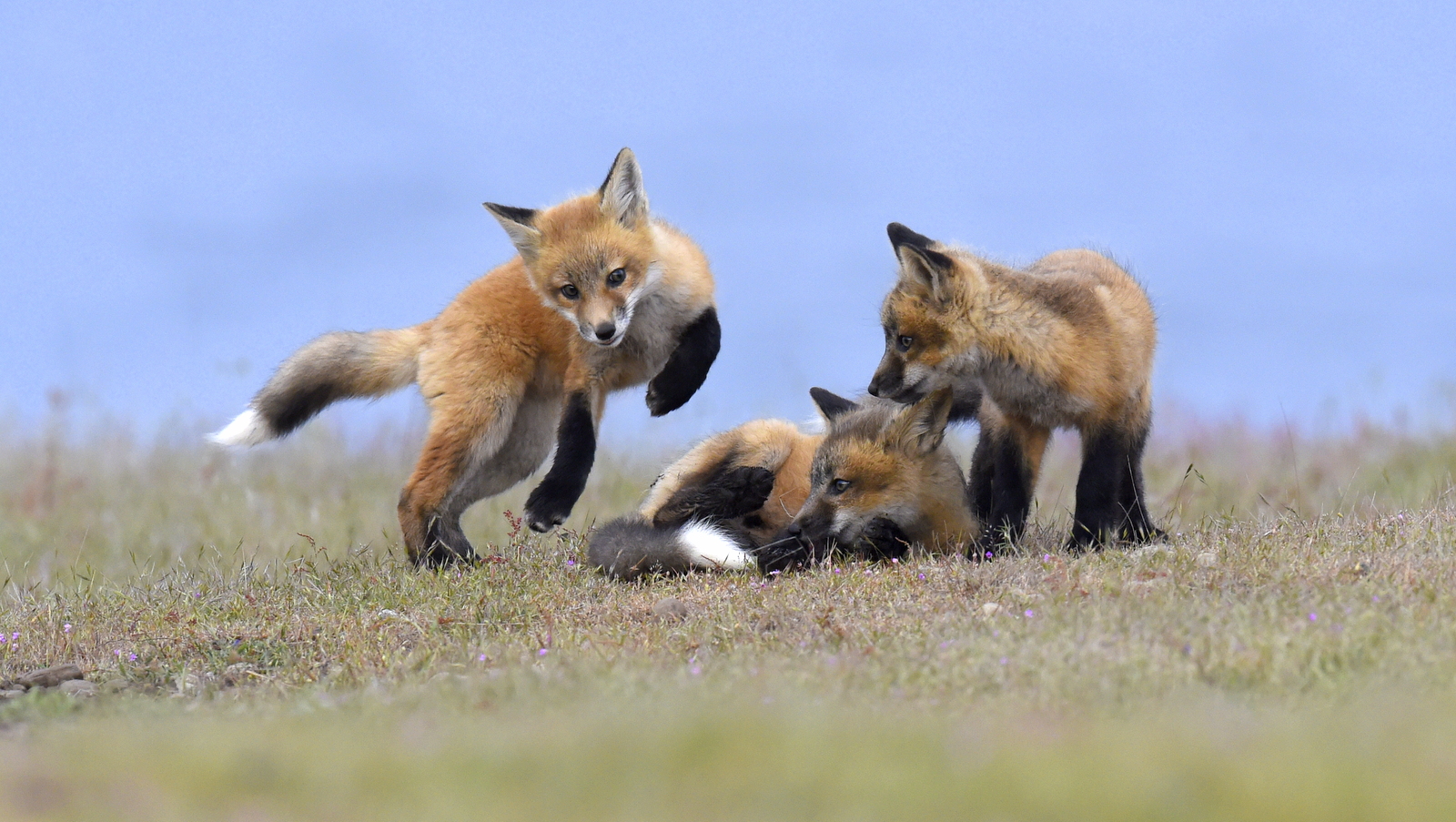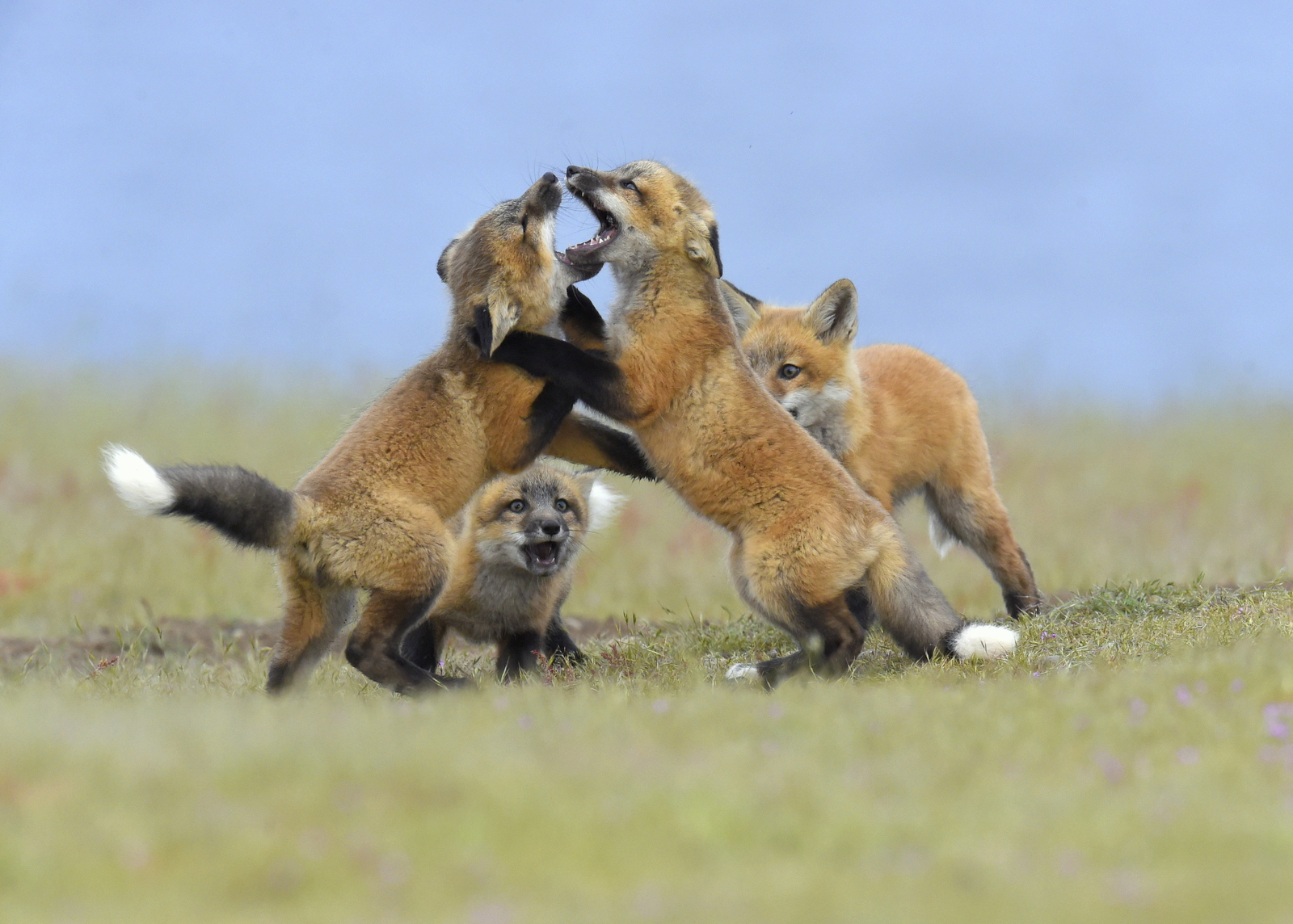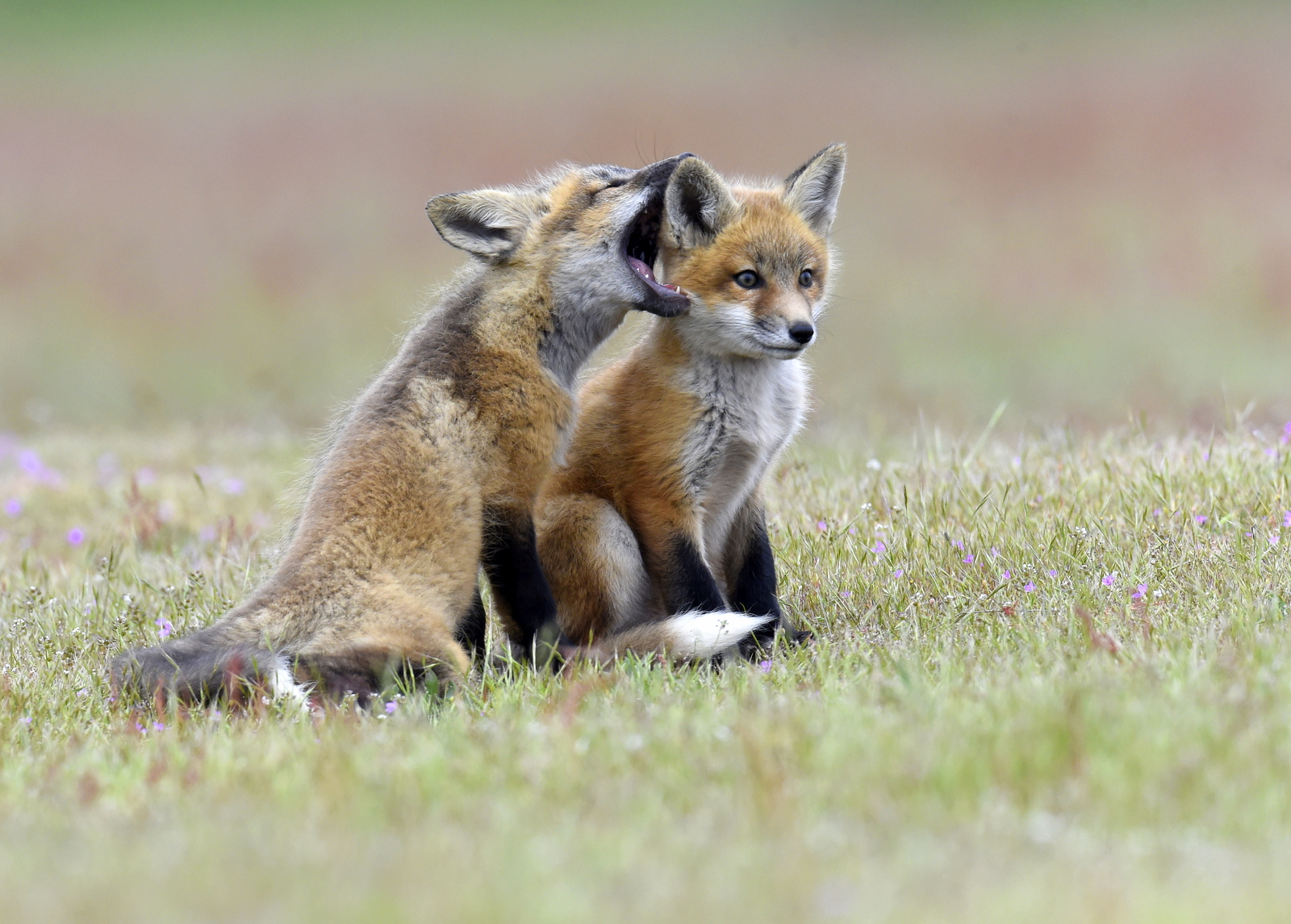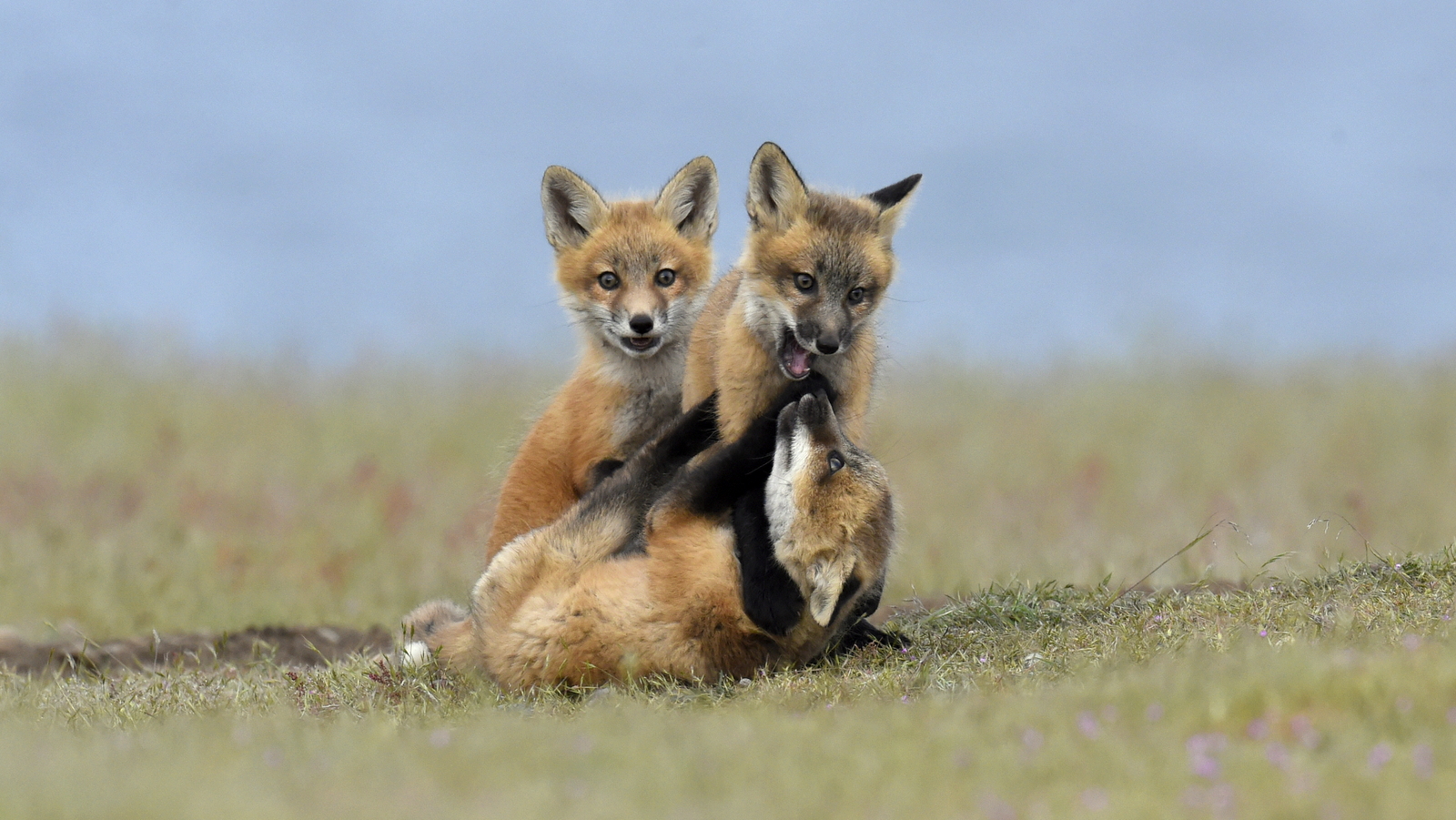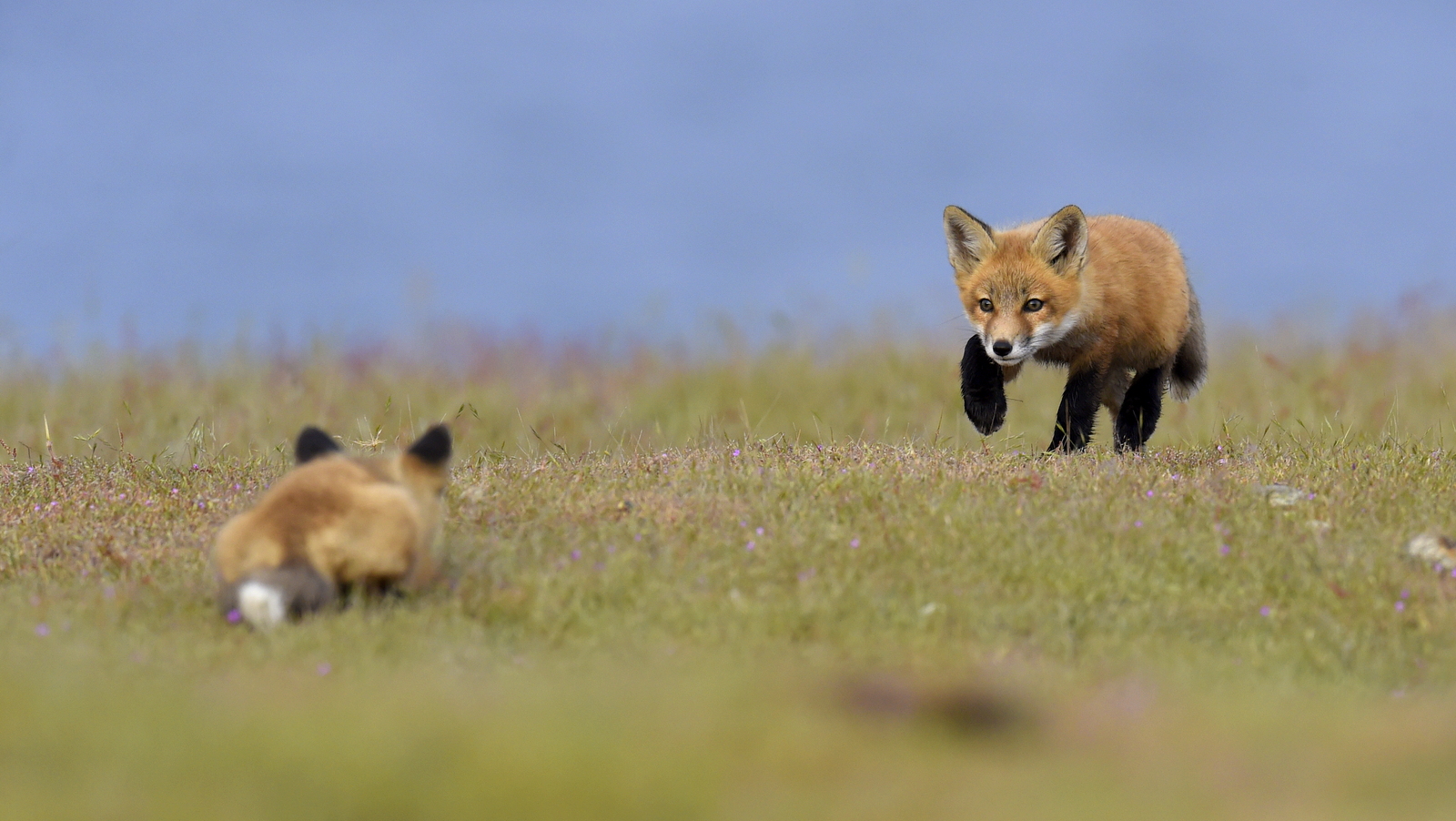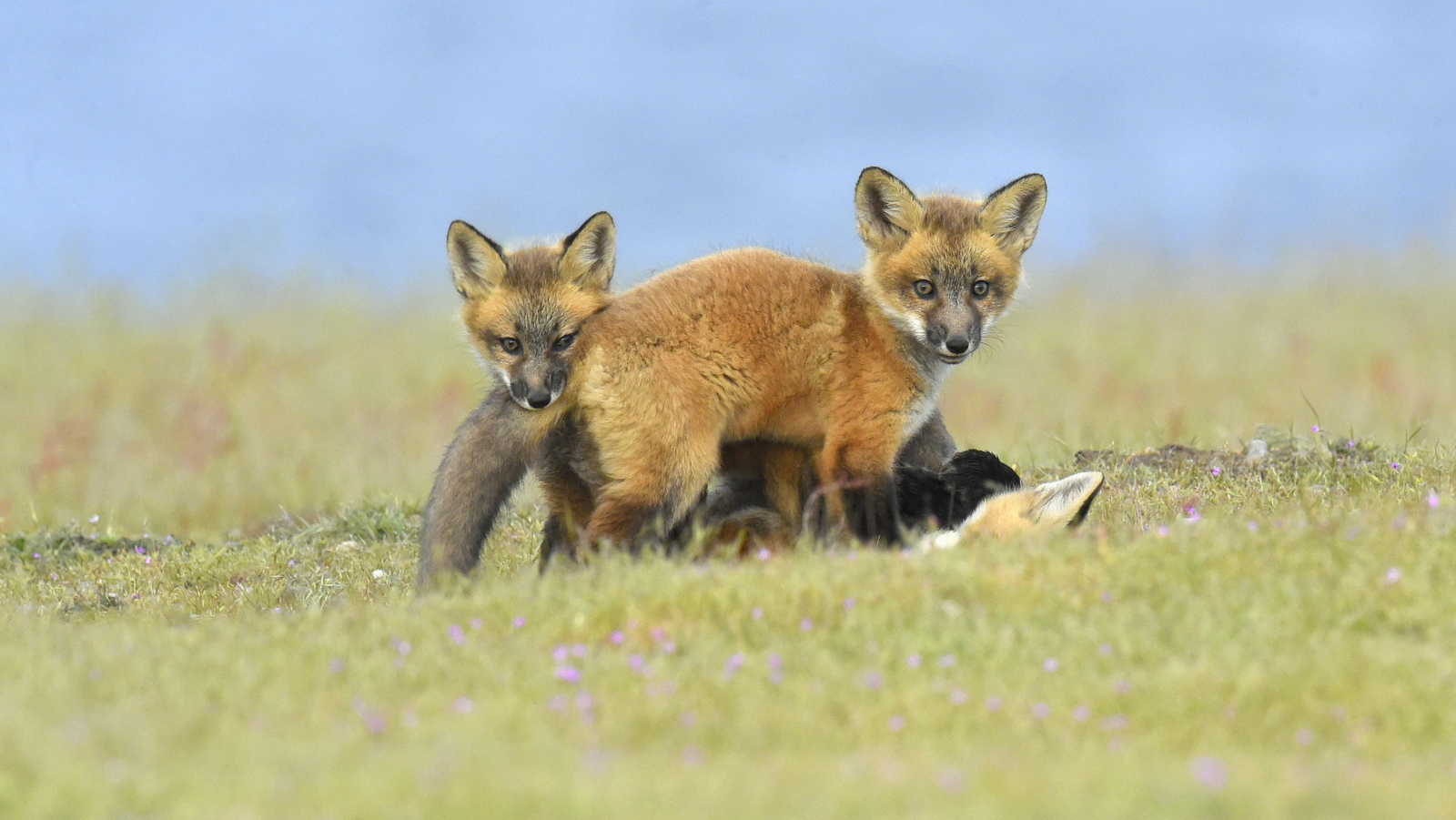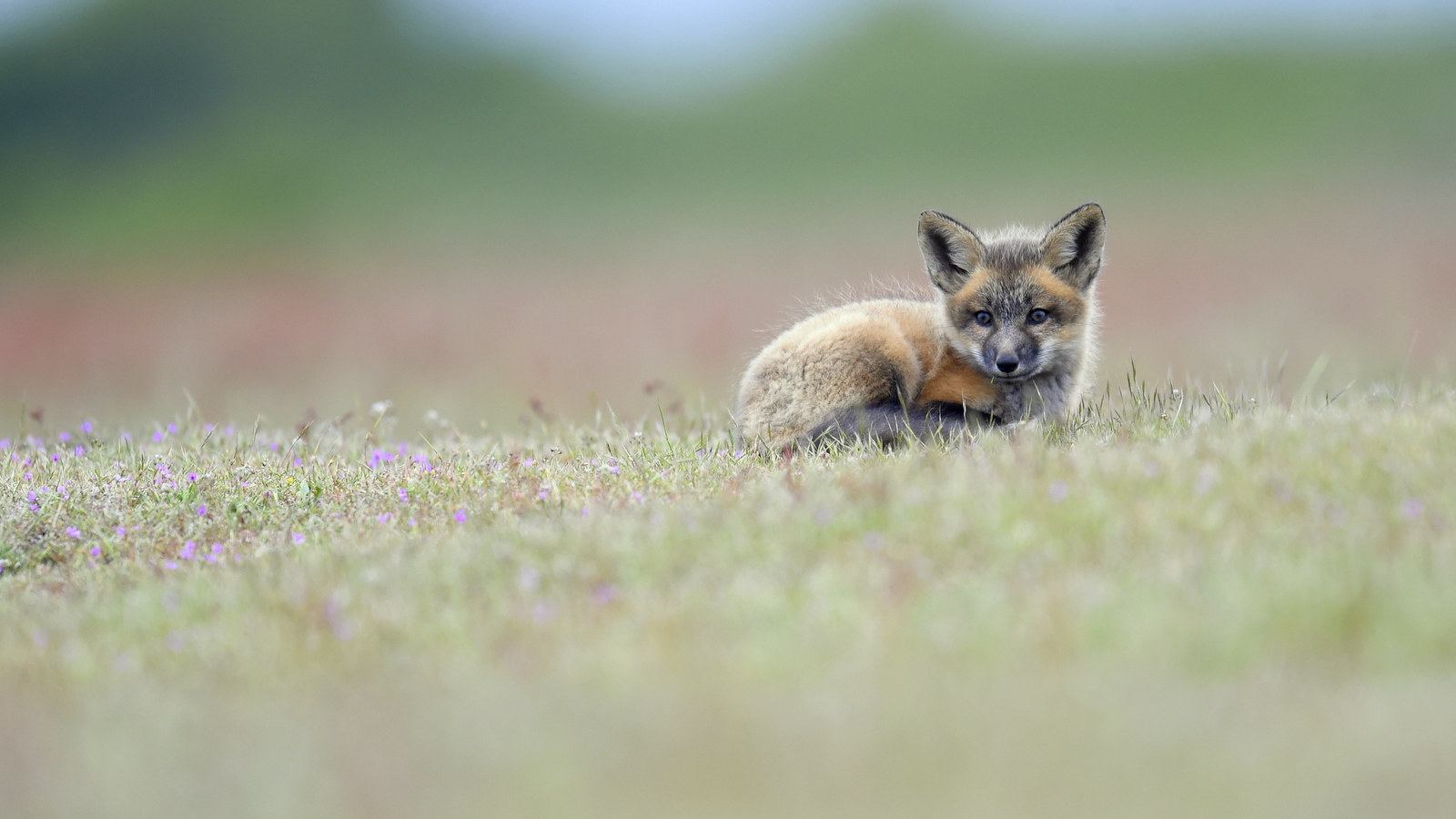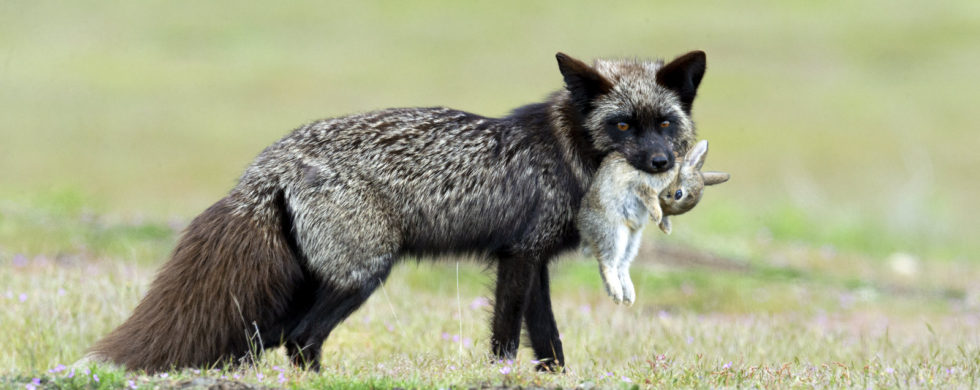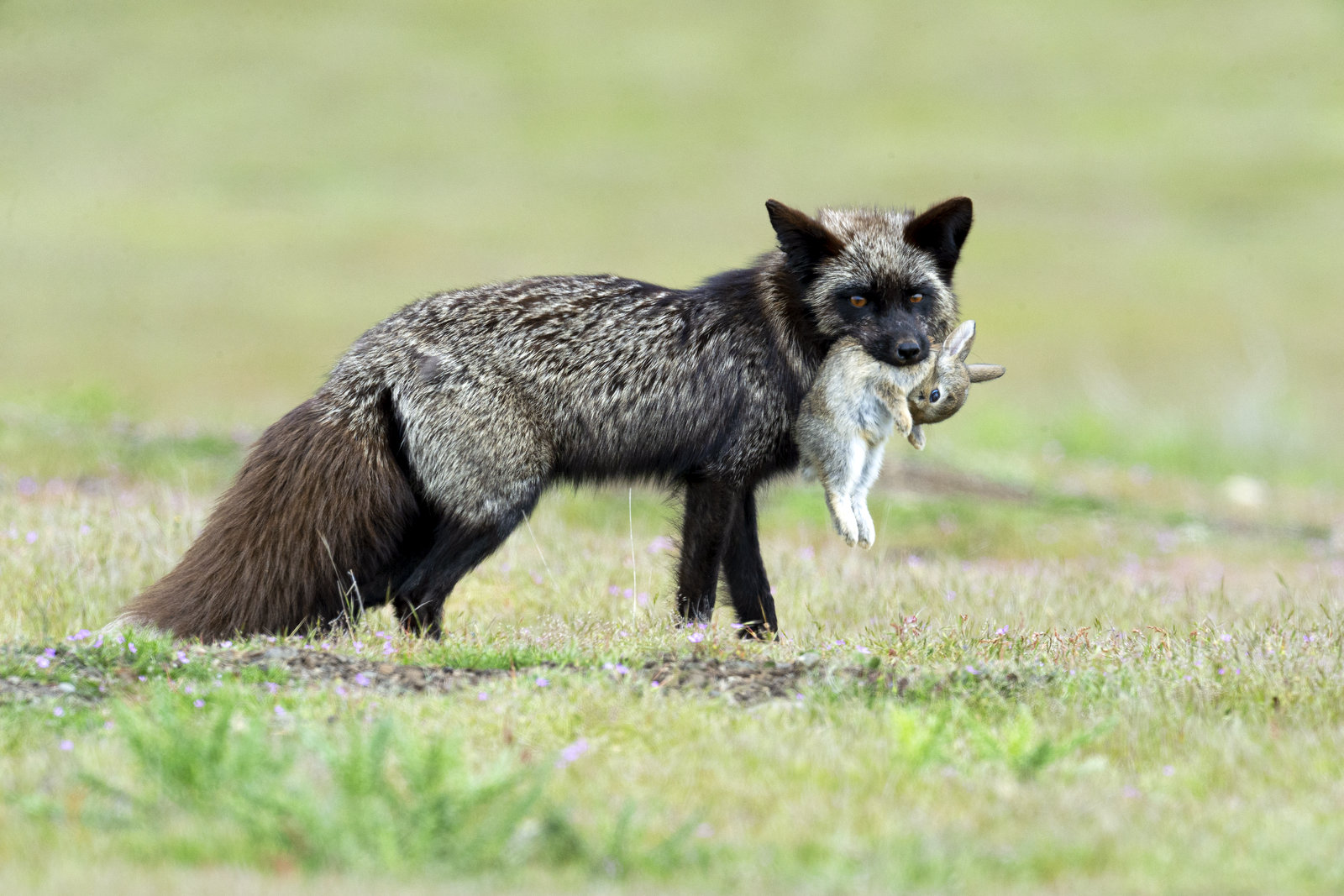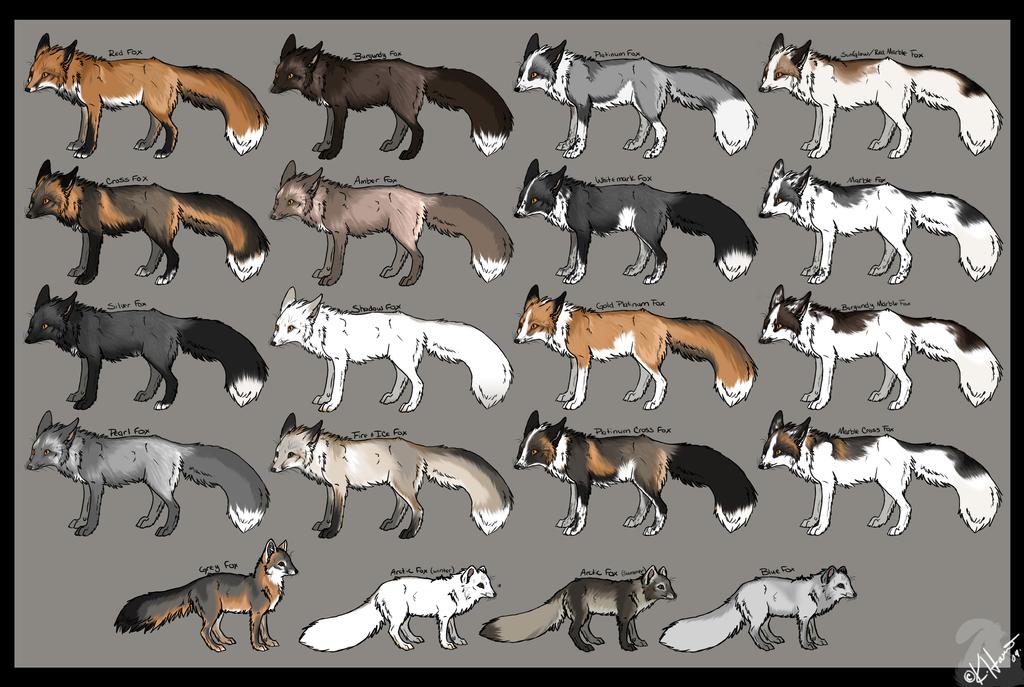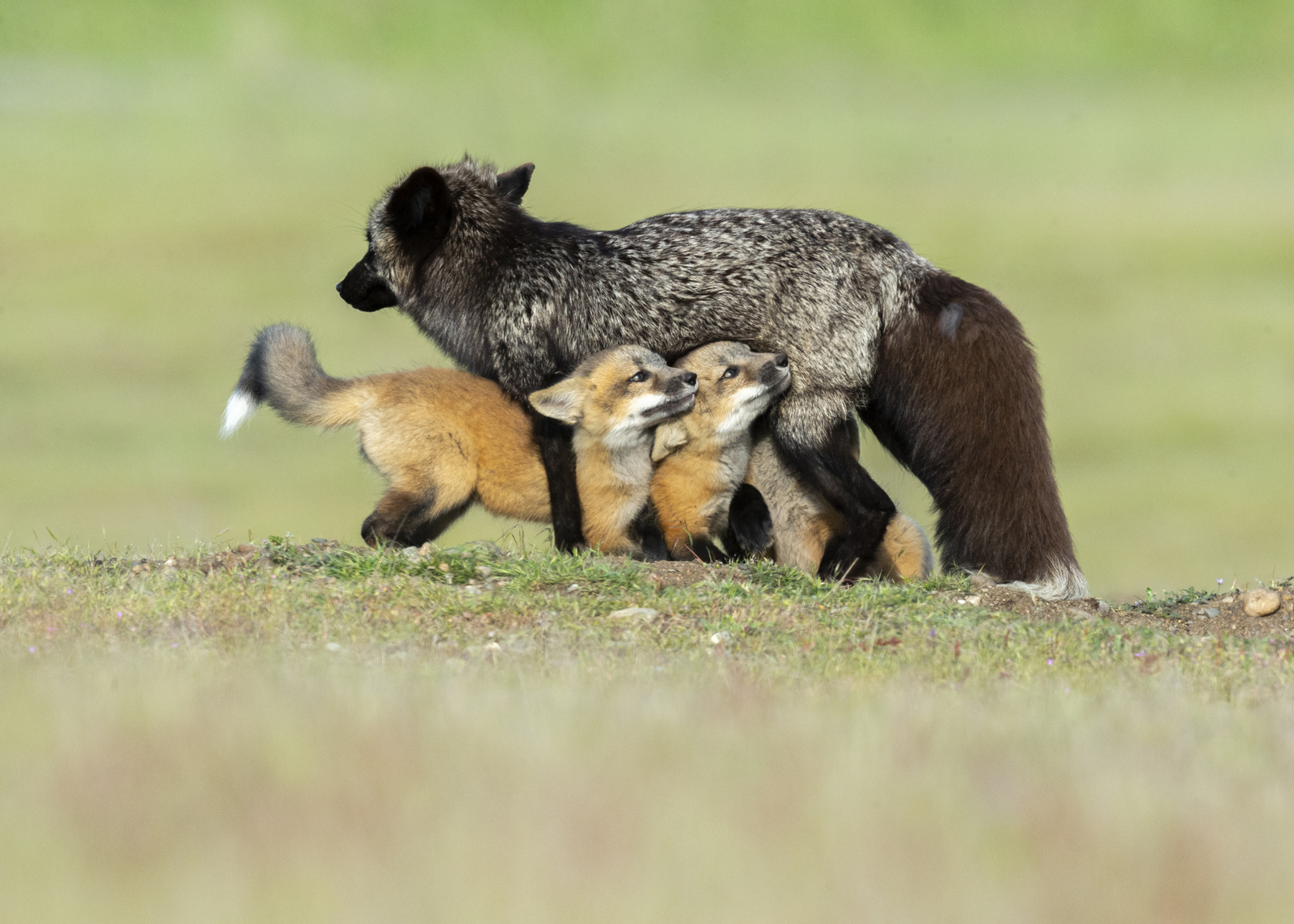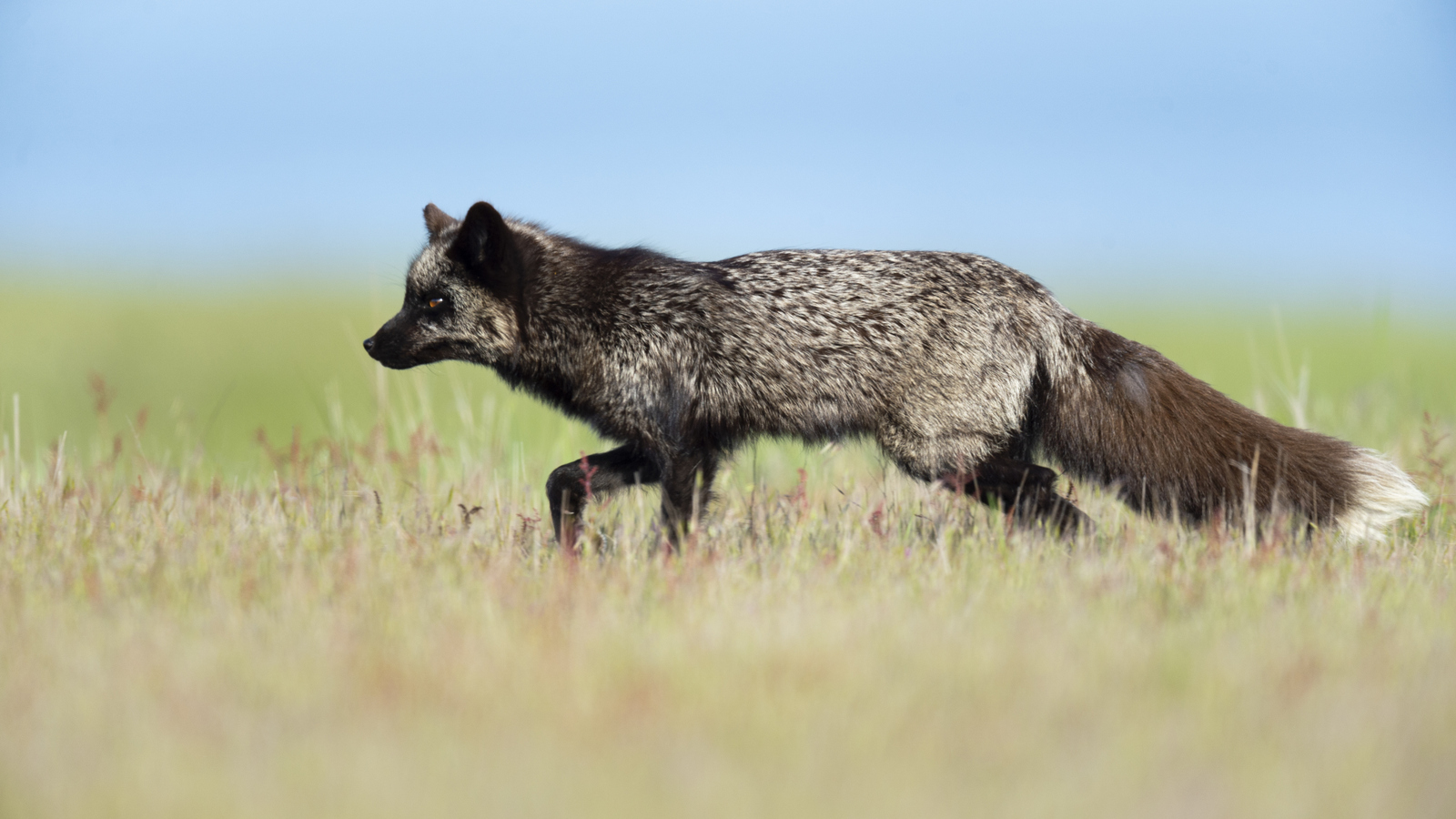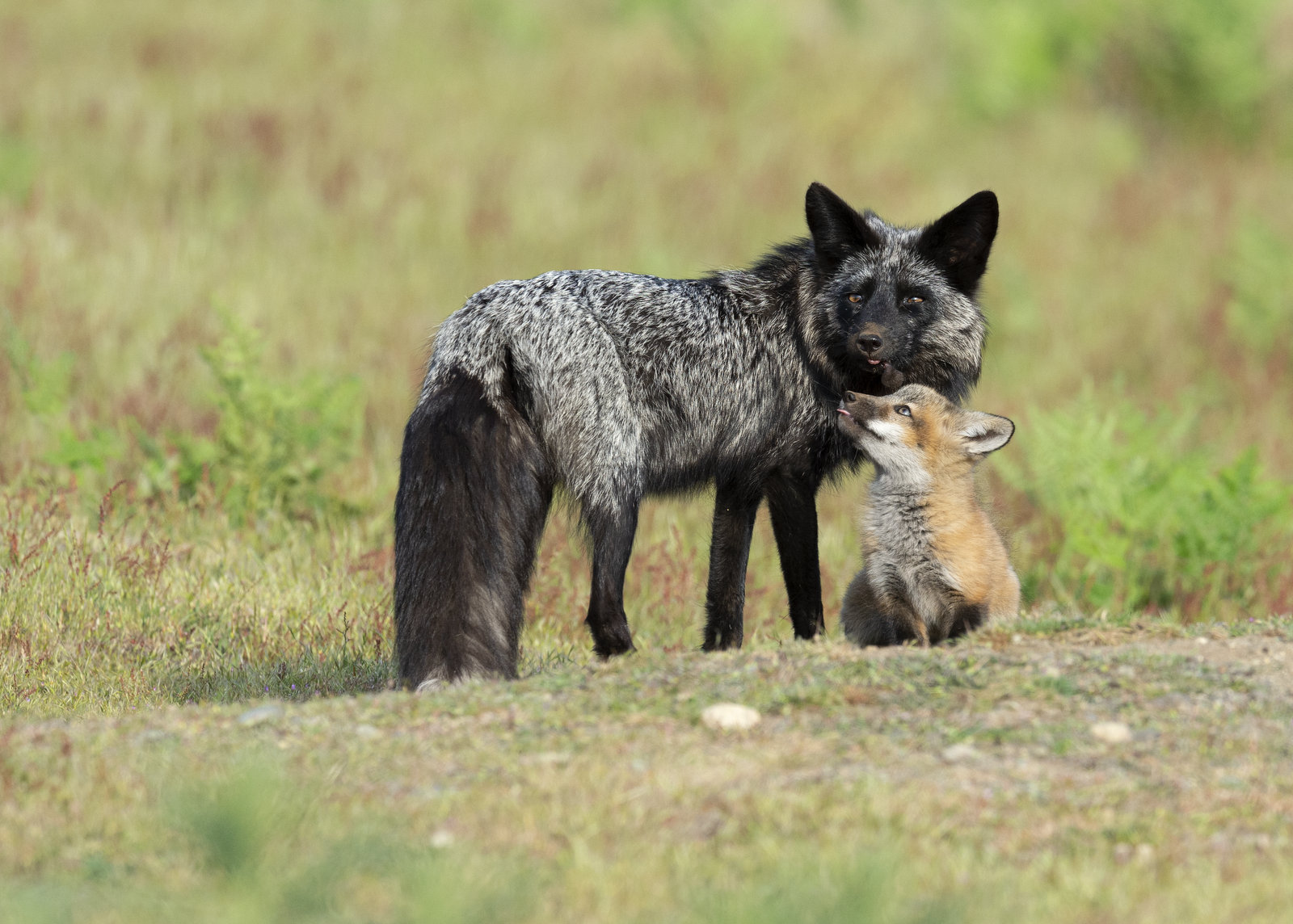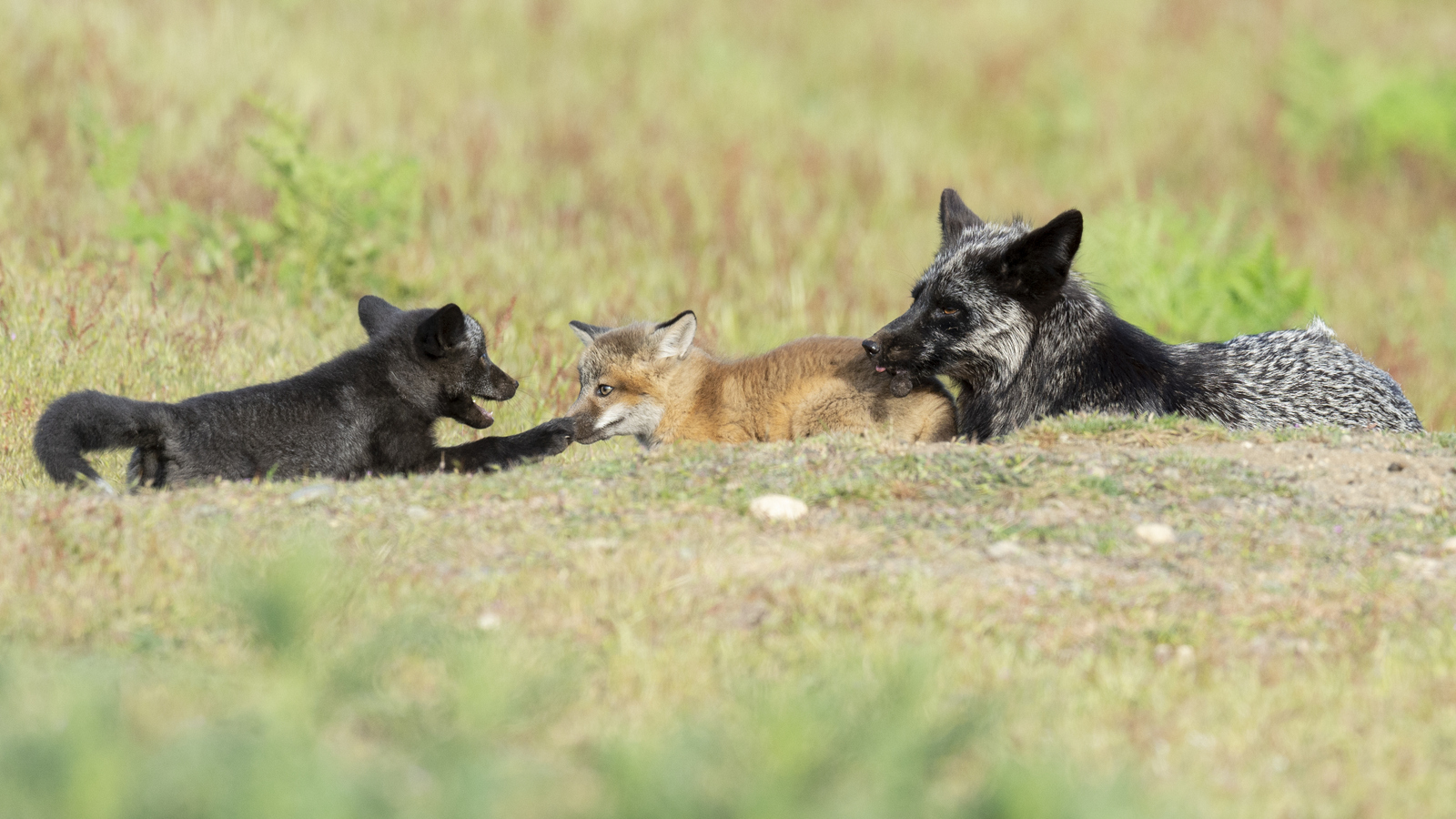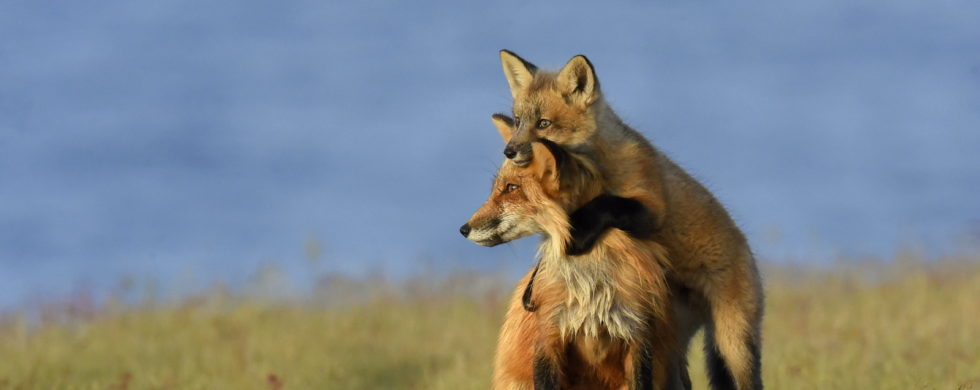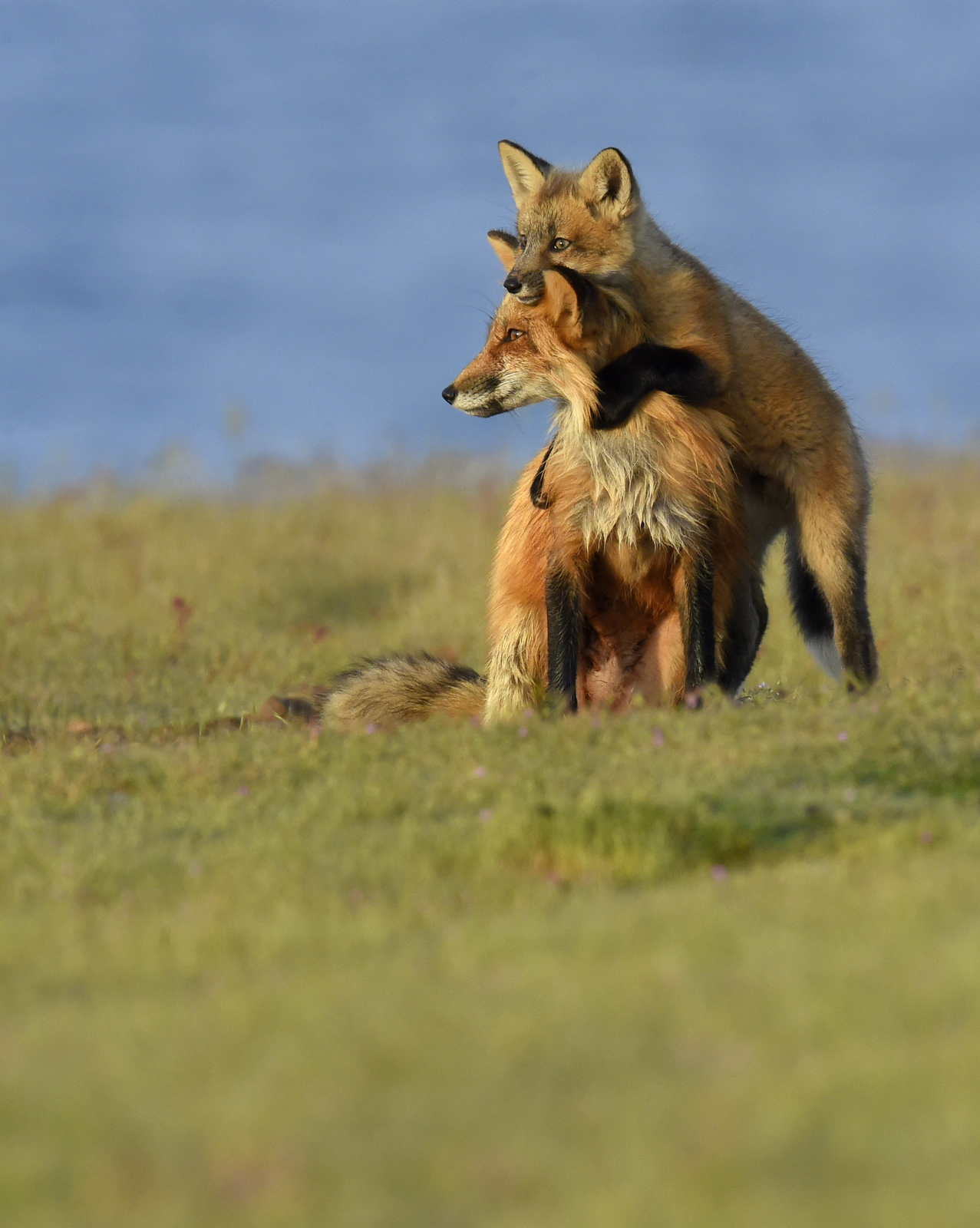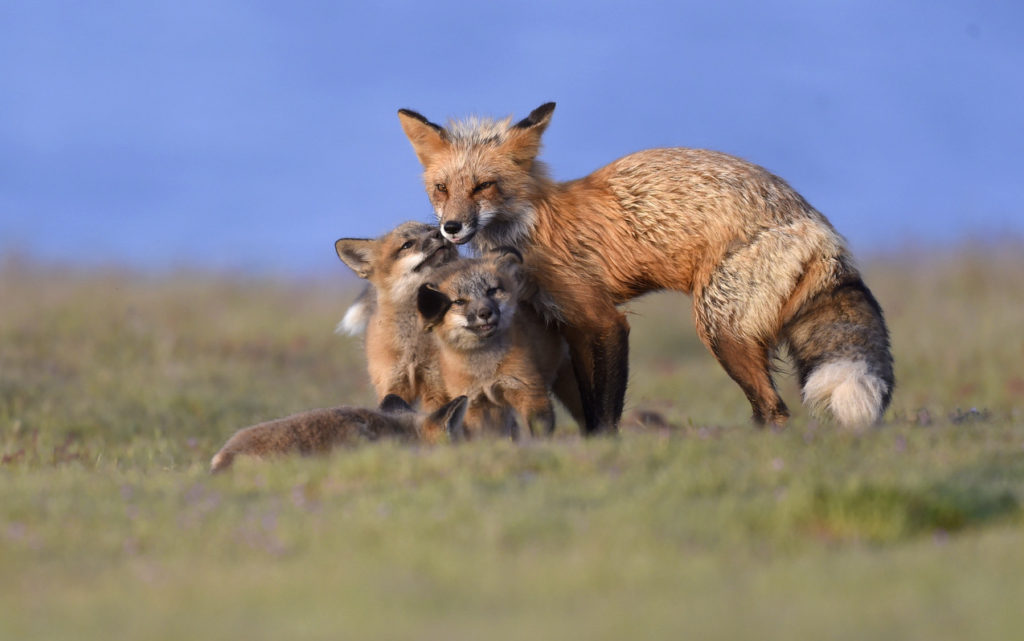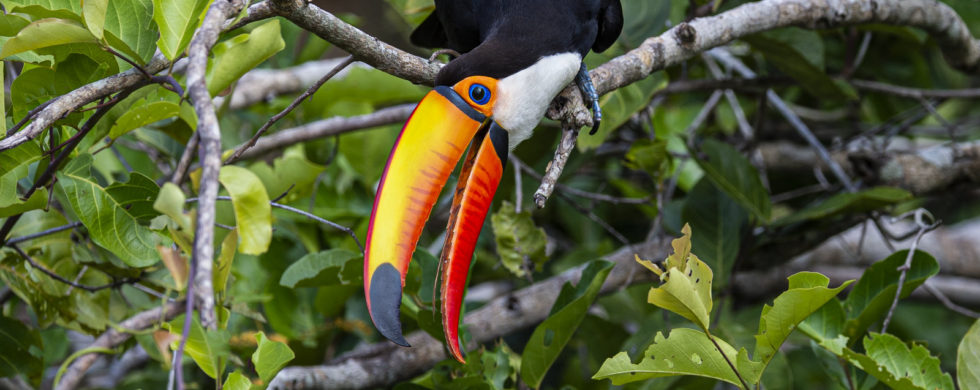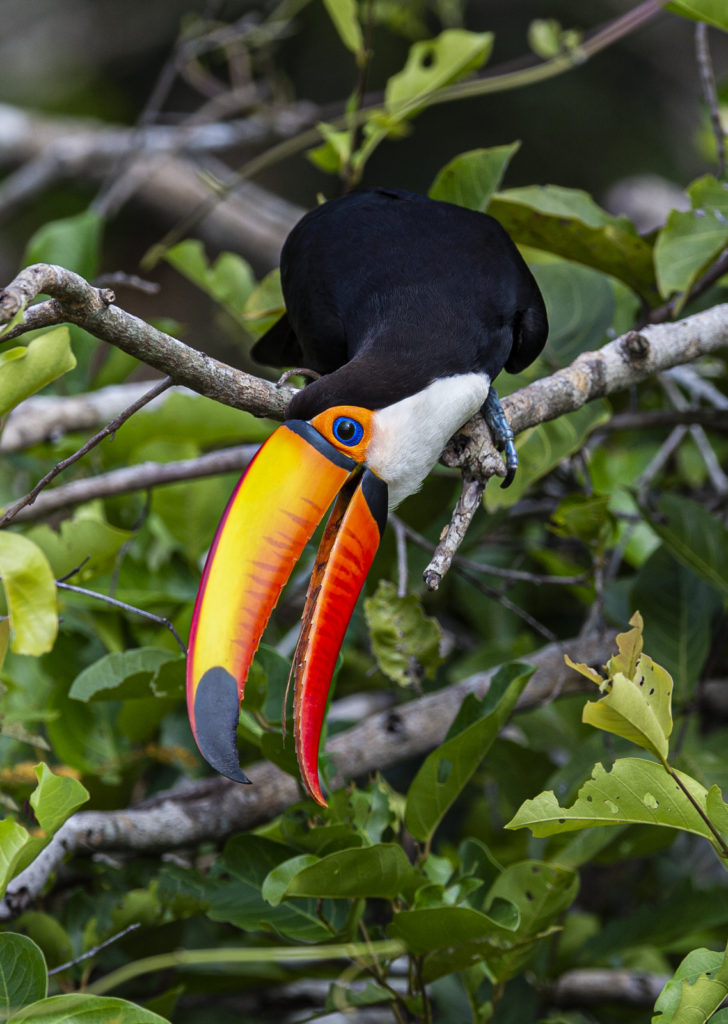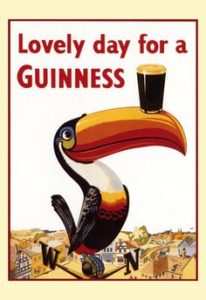31
Shot of the Month – October 2020
By 2020 I imagine that most people have heard about the bumble bee crisis — this vital insect has been declining rapidly in the last 30 years due to the use of pesticides, climate change, and loss of habitat. Bumble bees are essential pollinators and without them, many ecosystems may collapse not to mention the 15 billion dollar agricultural industry which needs them for pollinating crops.
If those challenges weren’t daunting enough the poor fuzzy bee must also take care to avoid the Goldenrod Crab Spider (GCS), shown above, as they are particularly fond of dining on bees and wasps.
The GCS can typically be found hiding on an assortment of yellow or white colored plants though they can be occasionally found on purple thistles and asters and plants of other hues. Preferred hunting perches include milkweed, trillium, white fleabane, ox-eye daisy, red clover, butter cups, and, of course, golden rod to name a few. I found the lovely female GCS above in our garden on a black-eyed Susan in late summer.
The body of the GCS is naturally white though if she is hunting on a yellow flower she can change her body color with an incredible level of accuracy to match the color hue of the plant. The color transformation is not automatic and going from white to yellow takes between 10-25 days while converting back to white only takes about 6 days.
I found this white GCS on a sunflower in a different part of the garden:
Crab spiders get their common name from their tendency to hold their front legs aloft like crabs (like in the image above), and their ability to run sideways as well as frontwards and backwards. These spiders do not spin a web to catch their prey but rather are ambush predators. The spider will sit patiently on the flower until an insect comes too close and then she will snap those legs around the body of the prey as she sinks her fangs into the victim and injects them with a paralyzing venom. Sometimes the spider will try and blend in while other times, if there is a color mismatch, she may sit in the middle of the flower imitating the blossom.
A honeybee in the grasp of a Goldenrod Crab Spider: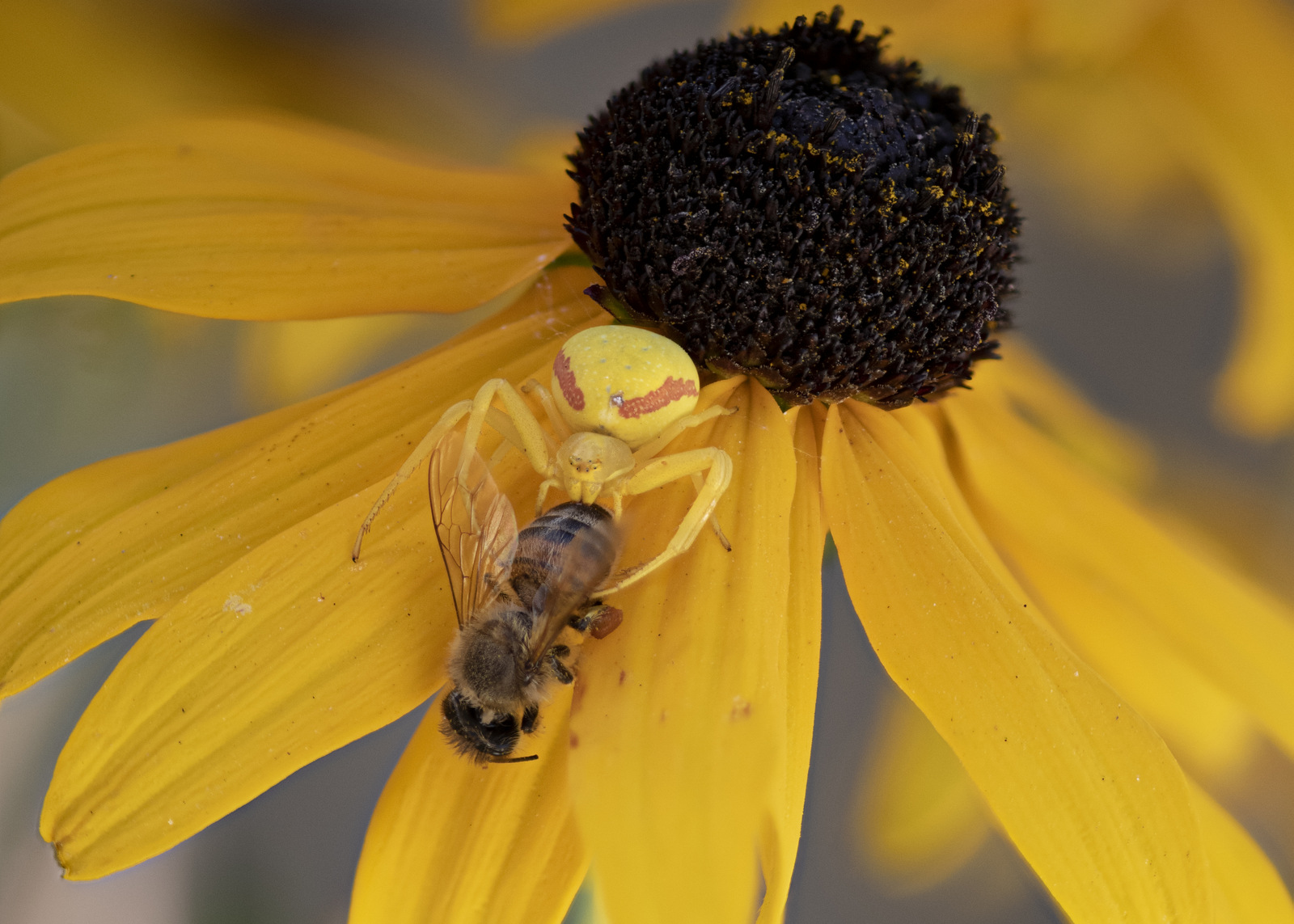
Female GCS range in size from 1/4” to a bit more than 1/3″ (body length only). Males are smaller and range from 1/10″ to 1/6″ in size. During the bounty of summer, these spiders will eat just about any insect including flies, bees, butterflies, grasshoppers, dragonflies, and hoverflies. However, by late summer and fall most species of bees have died off and many insects are gone. Except for bumble bees. They continue to thrive and they are the primary visitors to the now-blooming fields of goldenrod, thistle, and other late-blooming flowers. They also become the primary prey for the GCS. During the fall, goldenrod-filled meadows become killing fields and are littered with the bodies of common eastern bumble bees.
Pollinating is a dangerous business…
Here you can see a live hunt in action (link). (Volume up for full effect!)
Bee safe out there. Until next month….m
Sources:
Sharp-Eatman Nature Photography
Nikon D850, Nikon 105mm, f/6.7, 1/30 sec, ISO 64, 3 shot focus stack
30
Shot of the Month – September 2020
For eleven glorious days in September 2020, we explored the Grand Teton NP (GTNP). The photo above was one of the best images from that trip, though, uh, it was actually taken in Yellowstone NP. Say what? Let me explain…
During our first four days in the GTNP, we had some wonderful sightings — moose, lots of moose, and bison, pronghorn, owls. Fantastic stuff.
At different locations, we would invariably bump into other photographers and tourists. People would talk about what they had seen and share information — we were all looking for the next hot tip on where to find something special.
On the fifth day, the chatter was abuzz about a grizzly bear that had killed an elk in Yellowstone.
“Did you hear about the Grizzly?
“No”
“Yeah, a woman got it all on video. It is amazing. The bear is still with the elk on the bank of the river.”
More and more chatter about the video that was on Facebook. And then we would bump into people who had been there and seen the bear with the kill. They said it was incredible.
The kill happened on a Friday. We heard about it on a Saturday. We (my partner Nicky and I) discussed…”Should we try and go up to Yellowstone to see the Grizzly…”? We figured that a grizzly would finish the elk quickly so till we got up there he would probably be gone. We stayed put.
Sunday, people are still talking about the grizzly…We discussed again: “Should we go…”? In the end, no.
Monday. People are still talking about the grizzly. “Yeah, the bear is still there…there is still lots of meat on the kill…”
We again pondered this “High Risk-High Reward situation.”
What made it high risk?
- We would arrive 4 days after the kill was made. It seemed very unlikely that a grizzly would stay so long on a kill site — how much of a meal could be left to entice him to stay longer? We could drive up to the site and find nothing. The area between GTNP and Yellowstone is a dead zone for wildlife so there is not much to see otherwise. Sure, we could wander around the lower part of Yellowstone and hope to see wildlife but the odds of seeing something good were low otherwise.
- It would take 2.5 hours to reach the kill site. We heard that parking was very difficult so we would have to arrive early or we wouldn’t be able to park near the site and we would have to walk a long distance. And as a photographer, I would want to arrive early to have the good morning light. We would have to get up at 3:30 am to reach the nearest parking area by 6:30 am (just before sunrise). This meant that we really should end our day early on Monday so we could get to bed early, costing us photo opportunities on that day. Tuesday might be a complete wash. We would most likely get back late on Tuesday making it difficult to get out early on Wednesday, and in general, leave us exhausted for 1-2 days. So this high-risk “detour” could cost us 2-3 days of photography at GTNP.
- Would the light be any good at the location? Backlit?
- Would we have access to the site? In some settings, only a few photographers have the best, unobstructed angle for a good shot.
And the high reward part? Well, getting to see a grizzly on a kill site is a once-in-a-lifetime opportunity.
What to do? Getting a good photo out of this venture seemed very, very unlikely and would cost us a lot of time and degrade our ability to capture images in GTNP. But, a grizzly, on a kill site….we had never had a good grizzly sighting before.
We pushed all of our chips into the center of the table and rolled the dice (Craps metaphor). We got up at 3:30 am and drove the entire length of GTNP in the pitch black (this is nerve-racking as you never know when an animal might come out onto the road), through the border area between the parks, and then up through the southern part of Yellowstone to Hayden Valley. We found the parking area and we tucked into the next-to-last spot! We spoke to a few people and understood where to go. We walked along the river and found a spot about 150 yards across from the grizzly. Photographers were spread out along the river bank but there was plenty of space for everyone so it was not quite as crazy as it can be sometimes.
And then we waited. The river was completely fogged in. It took more than 2.5 hours for the fog to burn off before we could start capturing images.
Was it worth it? Wow, was it! Once the fog burned off we had a clear view of the grizzly. The location of the bear on the river was near perfect and was well-lit in the morning and in the afternoon. We spent 12 hours there taking it all in.
It was just an amazing experience to get an unobstructed view of a grizzly for such a long period and observe his behavior and the interactions between him and other wildlife as he fed and protected his kill.
So first, here is the video showing how the grizzly killed the elk. September is the rut season for elk and this massive bull was in the prime of his life. Unfortunately, the bull had broken his rear leg, most likely while sparring with another male. The grizzly must have noticed this injury and took immediate chase. Death was relatively quick as the bear drowned the elk in the river.
And in this video, you can see how much work the grizzly did to bury the elk to protect it from scavengers.
The bear’s day was comprised of digging up the carcass to feed and then burying the carcass to keep it safe. Then digging it up…then burying it. Digging…burying. Dig. Bury. All day. He was also relentless in his efforts to chase off any scavenger that might try and steal a morsel. So many words…check out this fun video that Nicky captured. It will give you a better sense of what our day was like:
Kind of hard to steal a bite when a 600 lb. grizzly is lying on the prize…
By burying the carcass next to the water the bear only had to defend in one direction. In this scenario not even an entire pack of wolves would be able to budge this bruiser. This one, plaintive-looking wolf is not a threat, and the bear never even bothered to growl or threaten the wolf as the balance of power was clear.
We finally left to drive back to GTNP at 7 pm and made it to bed by midnight. A 20+ hour day. We were pretty shattered the next couple of days but the high from that dice roll will last a lifetime.
Until next month…..michael
Nikon D4S, Nikon 600mm,1.4x TC (effective 850 mm), f/5.6, 1/640 sec, ISO 1100
31
Shot of the Month – August 2020
Photographers love hitting the beach to capture, what they hope will be, an epic image of where land and sea collide. Photographers on the East Coast of the US usually get up early to capture the sun rising on the horizon. Dawn’s early light and whatnot.
Light chasers on the West Coast typically make it a late evening as they wait by the sea for the sun to paint the sky red as it glides into the ocean.
Having moved to Washington State I am now exploring West Coast seascapes — a new paradigm for this East Coast “kid.”
In September 2019 I made my first visit to the Oregon coast to photograph the shipwreck of the Peter Iredale. You can read about that adventure here. I visited the beach in the afternoon and captured these lovely images:
Standing with my back to the ocean the setting sun painted the rusting hull with a beautiful hue of red and pink light.
In August of 2020, I went back to the same beach but I only could visit the site in the morning. Given that the sun would rise from the other side (the “land” side) the colors would be much more muted. Would it be worth going? Perhaps better to just sleep in? In the end, I dragged myself out of bed at 4:30 am and made my way to the beach. Grumble, grumble. Voice in my head: “…you’re just wasting your time….” Grumble, grumble.
Before the sun breached the horizon I captured this ok shot:
As the sun rose over the horizon I explored how the warm light moved down the ship’s hull:
Yawn. While accurate, not terribly compelling…
I continued to look down at my camera as I shot the changing light. After a few minutes, I looked up and glanced behind the hull.
“Holy S*&T!”
I had totally NOT noticed that the sunbeams were now just high enough over the horizon to blast beams of light through the ship, casting dramatic shadows. This caught me completely off guard. I hadn’t even imagined such a scenario. Frantic, I ran over to the other side of the ship and began to shoot into the sun. I knew we had the potential for something really special with this scene.
For the next 20 minutes, I worked at a feverish pace to capture the changing light and shadows before they vanished….First some color versions:
The harsh light and dramatic setting are well suited for Black and White…
Which version do you like best? (#1?….#6?). (I am leaning toward #4, myself)
So there you have it, another example of why you should always go out and see what Mother Nature has up her sleeve.
Conventional wisdom says,
West Coast Beach = afternoon shoot. (for the “ideal” shot)
But as we can see here, even a sunrise, on a West Coast beach, can offer a glorious scene when the conditions are right.
Shifting the sun 180° can create scenes that are as different as, well, night and day….which seems kinda obvious, now that I say it out loud.
Still caught me off guard though…
Until next month…m
Image #4: Nikon D850, Nikon 17-35mm (@ 35mm), f/22, 1/1000 sec, ISO 64, -1.0 EV
31
Shot of the Month – July 2020
In October 2019 I made a quick, mid-week run down to Oregon (Portland is about 3 hours away) to work on my landscape photography skills. I mainly shoot wildlife so I need all the practice I can get. I had visited some of the waterfalls of the Columbia River Gorge in the summer and I wanted to see if autumn brought any interesting color to the compositions. On this quick run, I only had Wednesday afternoon and Thursday morning to make images – not much time but my goal was to try and get at least one good photo from the trip. The falls can get quite busy on the weekends so I went down in the middle of the week to, hopefully, avoid the crowds.
Late Wednesday afternoon I hiked up to Ponytail Falls and found the place deserted. Ahhh, heaven. I could commune with nature and compose my shots in peace. I consider the trip a booming success having created this image — not bad for a wildlife guy!
I had to shoot two images to get the entire scene in sharp focus. In the first image, I focused on the rocks in the foreground (leaving most of the scene behind blurry) while in the second image, I focused on the rocks about 2/3rds back in the scene (which left the rocks in the foreground blurry). By merging the sharp elements from the two images together we get one image that is sharp from front to back.
A great way to improve your landscape images is to ensure that you have a strong element in the foreground of the image. In this case, I used the rock in the lower left corner to anchor the photo. The key to a compelling image is depth and this image has multiple layers — the rocks in the foreground, then the stream, the rocks and bushes a bit further back, then the falling water, and finally the rocks of the cliff face.
Truth be told I did place the yellow maple leaf on the rock — it was lying just next to the rock but I positioned it on the rock for better viewing as it helps tell the story and it is visually compelling. I tried positioning the leaf in multiple places and in various orientations. In the end, this composition worked best – I like how the leaf stem guides your eye into the rest of the image. I had started with “stem down” but it all clicked when I rotated the leave around into the “stem up” orientation. I also like how the yellow leaf mirrors the yellow leaves on the bush in the far back right portion of the scene.
Together, these elements convey “Falls in the Fall.” Just what I was looking for…
Until next month…..m
Here are a few links with ideas on how to improve your landscape compositions:
Importance of Foreground Elements (Video)
5 Landscape Mistakes to Avoid (Video)
How to get a perfect foreground (Article)
Importance of foreground in landscape photography (Article)
Nikon D850, Nikon 17-35mm (@ 17mm), f/8.0, 1.5 sec, -0.5 EV, ISO 64
29
Shot of the Month – June 2020
Warning: Objects on your screen may be smaller than they appear.
In this image, the American Pygmy Kingfisher (APK) appears to tower over us. Fear not, we are not in danger. The APK is the smallest of all kingfishers and is about 5 inches in length and tips the scales at a mere 18 grams (about the weight of 3 American quarters or about 1/2 an ounce).
The wee bird seems so large because I was floating underneath him in a boat at a close distance with a 400 mm lens when I captured the image. I love this shot as the combination of side lighting and blurred background gives the image an other-worldly, mystical vibe.
APKs can be found in the lowlands of the American Tropics from southern Mexico to central Brazil. They are most commonly seen along small woodland streams, pools, puddles, and small channels in mangroves. You can see their full range here. I photographed this fellow in the Pantanal in Brazil.
The head and wings of the APK are metallic green while its body and neck are deep orange-buff, shading to rich dark rufous on the breast, sides, and flanks. The diminutive kingfisher sits by rivers and will dive headfirst into the water after small fish and tadpoles. He will also dine on insects such as cockroaches, aquatic beetles, and larvae.
Chillin by the river:
Scanning the water below…
Uh, too close!
Smallest of kingfishers = Largest of smiles
Until next month….m
Nikon D500, Nikon 200-400mm (@400mm), f/4, ISO 160, +0.5 EV
Source:
30
Shot of the Month – May 2020
On our first trip to the Pantanal in 2017 we learned that this incredible ecosystem was home to five types of kingfishers. I am a sucker for bold colors so I was hopeful that I might capture a few on “film.” While I was hopeful I was not optimistic, as most kingfishers are tiny and skittish making it very difficult to capture a good image. Seems that they do things differently in the Pantanal. On our first day on the water, during a three-hour boat trip on the Pixaim River we saw ALL five species. And even better, the birds often took no notice of us as we drifted by as they scanned the water below for fish. On our second trip to the Pantanal in 2019 I captured the image above of a male Green Kingfisher (GK). The female GK looks similar though she does not have the rufous colored chest feathers.
Small fish are the mainstay of his diet so you can usually find the GK perched on a low-hanging branch near the water’s edge as the bird looks for fish that swim near the surface. Aquatic insects are also on the menu.
Target acquired, Dive!
Target missed! Time to shake it off and get back in the game.
The Green Kingfisher can be found from Southern Texas through most of Central and South America. Their numbers are dropping in Texas due to loss of habitat but they are still plentiful further south. To raise their young GKs build a horizontal tunnel into the side of the river bank. The tunnel is about three long and about two inches wide. (Two inches wide – that gives you a sense of how small these birds are)
This kingfisher, Chloroceryle americana, for you science types, is a real beauty and surely leaves the other birds green with envy.
Until next month…..m
Sources:
Nikon D4S, Nikon 600mm, f/4, 1/1000 sec, ISO 720 (Shot in Manual Mode with Auto ISO)
30
Shot of the Month – April 2020
Over the years I have seen a fair number of foxes but the sightings were usually brief and never really produced any good images. In 2019 I hit the jackpot as I was able to spend two full days near a fox den. The den was home to two females who were caring for four kits. A “typical” day would have me show up at sunrise (near 6 am) and sit by the den for about 6 hours. Around noon I would head into town for a quick lunch and then back to the site from around 2 pm till after dark (7 pm-ish). The females would leave the kits at the den as they went off to hunt. The mothers were seemingly tireless in their efforts and would come and go throughout the entire day to ensure enough food for the pups. During these periods the kits did little and often just disappeared into the safety underground. After an hour or so, though sometimes after much longer, a female would return with a rabbit, mouse, or vole. At this point, all hell would break loose. The pups would burst out of the den excited at the opportunity to feed. Mom would give the prey to one of the kits who would then run off with their “kill.” The others might chase it to try and steal the meal. Mom would then allow the kits to nurse for a few minutes. After feeding the young’ins would be in high spirits and run around like sugared-up toddlers and engage in all sorts of hi-jinks, roughhousing, assorted shenanigans, and general mischief. This chaos could last for ten to thirty minutes. Mom might leave fairly quickly to head off on the next hunt leaving the kits to their antics. Eventually, the kits would tire out or get bored and head down into the den.
And just like that, poof, an empty field. And then we waited for the return of one of the females with the next meal. So my day was made up of long waits of nothingness and then frantic shooting once the females appeared. As the day drew on the periods of nothingness seemed to get longer and longer. Pick at the grass. Pace around a bit. Lie on your back and look at the sky. Review some images. Pick at the grass…And then boom! Foxes are running everywhere and me trying to figure out which act of this three-ring circus to focus on.
It was a blast.
Here are the two moms – both are red foxes. Check last month’s post to understand how this is possible.
Moms heading off to hunt
Mom’s Back!
And now that we are fat and happy, let the games begin
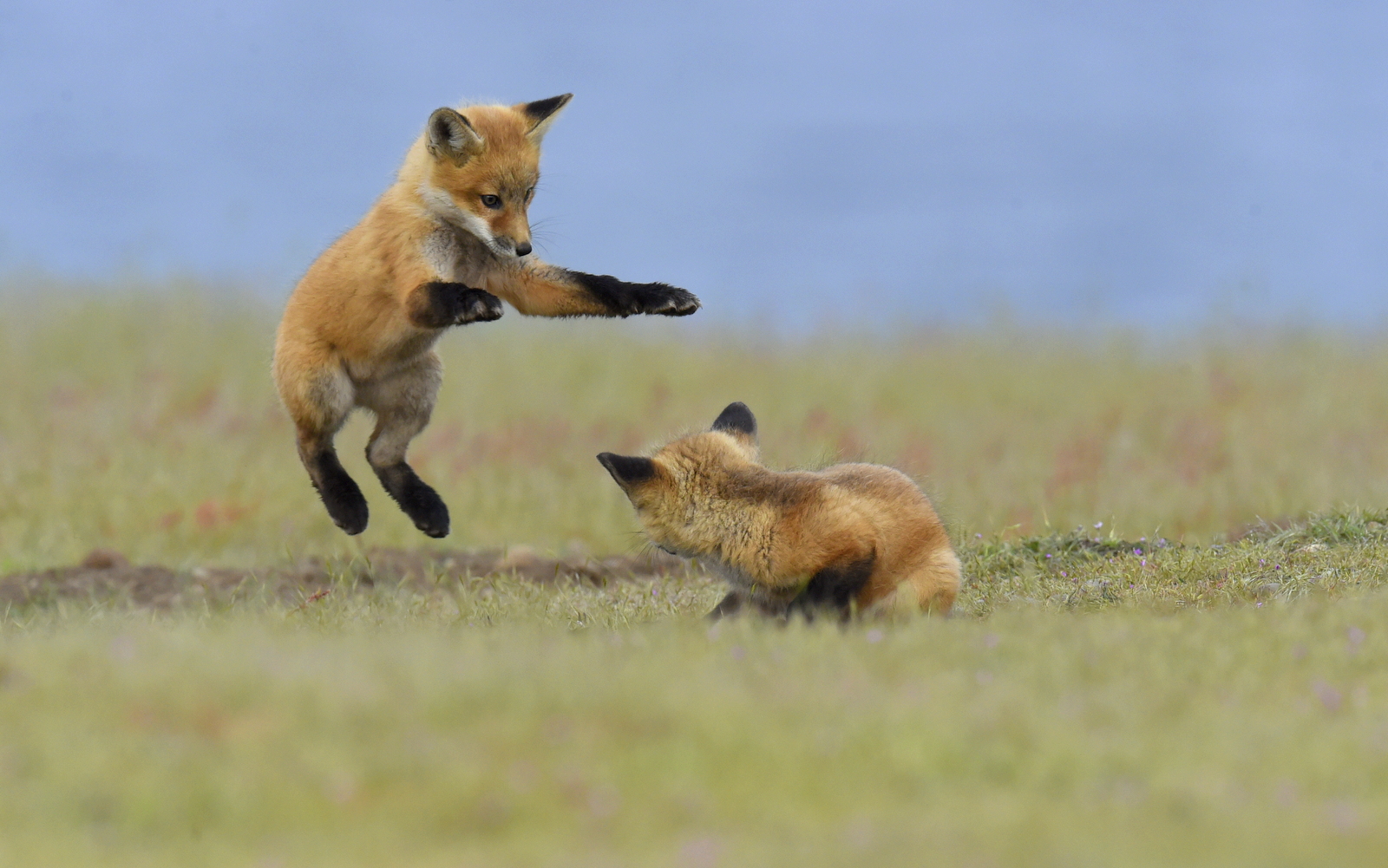
Finally running out of steam
Who knew that kaos could be so kute and kuddly?
And in case you missed it, here is another adorable family moment.
Until next month…..m
Nikon D4S, Nikon 600mm,, 1.4x TC (effective 850mm), f/7.1, 1/1000 sec, ISO 1600
31
Shot of the Month – March 2020
Here we have a lovely female red fox bringing a meal back to her kits. Please do not adjust your set (old person reference). Nor is that a typo. You might want to sit down for this, but, red foxes are not always red. I know, I know, it is a crazy, topsy-turvy world out there…
Despite the very firm, very unambiguous sounding name, red foxes come in a surprisingly large variety of colors. Most are categorized under three main color variations or morphs (if you want to sound all zoological and whatnot).
Red Morph
The red morph red fox is primarily red/orange in color and is the most common type of red fox.
Silver/Black
Silver foxes are a melanistic morph of the Red Fox that have a range of colors from bold silver to almost complete black. The silver version has silver-tipped hairs interspersed among the black fur. Black foxes vary in color and may have some brown fur also.
This whole naming thing is starting to sound pretty bogus, but ok, let’s carry on.
Cross Morph
Cross foxes are red foxes with a prominent black stripe along the spine and a stripe along the shoulders at a right angle which gives the appearance of a cross – hence the name of this morph. This color variation is only found in North America.
Regardless of the color mix all Red Foxes have one thing in common — that white-tipped paint brush of a tail. How’s that for a handy identification tip?
So, a Red Fox can be any color mix of red, orange, white, black, grey, silver, and brown as you can see in this graphic below. (Note: The four morphs shown at the bottom of the graphic are not found in the wild but are the result of selective breeding)
In the image below we see the same female silver fox waiting patiently as her kits jostle for an opportunity to nurse.
Here is the same female as she heads off to hunt for more food for her family:
And here is a male silver fox that I found at a different den site with one of his kits:
And here he is with two of his kits:
Wasn’t life easier when you just needed the “Red” crayon to color in the fox drawing? Well, now there is no going back. Next time you will have to break out the BIG box of crayons. You know, that big box of 64 crayons with the sharpener in the back? Yeah, that one. Let the games begin…
no going back. Next time you will have to break out the BIG box of crayons. You know, that big box of 64 crayons with the sharpener in the back? Yeah, that one. Let the games begin…
Until next month…..m
Sources
Nikon D4S, Nikon 600mm, 1.4x TC (850mm effective), 1/1000 sec, f/11
29
Shot of the Month – February 2020
This month an installment from the “Awwwwl Collection.” In this image I captured an adorable Maternal Mammal Moment (MMM) — a mother Red Fox (RF) with one of her kits as they look into the warm light of the morning sun. Mom is actually looking at rabbits off in the distance and the kit is, well, just being a goofball.
If you spend much time in nature you are going to see a red fox or twenty. The wily Red Fox is a survivor and exceptionally 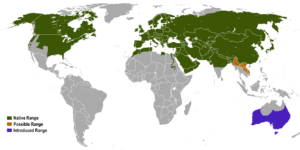 skilled at adapting to almost any environment. How successful? The RF is the most wide-spread carnivore in the world and she can be found across the entire Northern Hemisphere including most of North America (except southwestern US and Mexico) Europe, Asia and parts of Northern Africa. Red Foxes were introduced into Australia which has caused all sorts of problems…sigh. Humans….
skilled at adapting to almost any environment. How successful? The RF is the most wide-spread carnivore in the world and she can be found across the entire Northern Hemisphere including most of North America (except southwestern US and Mexico) Europe, Asia and parts of Northern Africa. Red Foxes were introduced into Australia which has caused all sorts of problems…sigh. Humans….
Foxes are the smaller members of the dog family (Canidae) but you can clearly see their kinship with jackals, wolves and other other dogs. There are about 30 species of foxes though only 12 of these, in the “vulpus” genus, are considered “true foxes.” Of this group of diminutive dogs the RF is the largest and most common of the group.
Is that like being a jumbo shrimp?
The Red Fox is about the size of a medium size dog and typically weighs around 25 pounds. For comparison the dessert dwelling fennec fox is about the size of a chihuahua and the arctic fox only weighs about seven pounds and most of that is fur!
Although RFs are listed as a carnivore they are really omnivores and can eat just about anything. Red Foxes feed primarily on small rodents (mice, rats, voles, squirrels, woodchucks, pocket gophers, deer mice) though they will also hunt rabbits, game birds, reptiles and other small animals. They will also eat fruit, bugs, worms, vegetables and if they live near the ocean they dine on fish and crabs. As you can see their diet can vary widely depending on what is available. In some areas, in the autumn RFs will dine exclusively on fruit including blueberries, blackberries, raspberries, cherries, persimmons, mulberries, apples, plums, grapes and acorns. They will also munch on grasses, sedges, and tubers. Whew, who’s hungry??
The family/social life of the Red Fox is also quite varied and hard to fit into any one category. Foxes are definitely less “pack” oriented than wolves and other dogs. RF’s may live in small groups of related individuals or may live on their own depending on their environment and temperament. I feel ya. Foxes are solitary hunters and only dominant females will give birth to kits. Foxes form monogamous life pairs with their mates. Alas these life pairings are rather short – the life expectancy for foxes, for some unknown reason, is only about 4 years in the wild!
For those playing at home:
Male Fox = Reynard
Female Fox = Vixen
Young Fox = Kit
A group of Foxes = Skulk, Earth, Leash
Us humans have a complicated relationship with foxes. On the one hand our mythologies and folklore are full of tales of the wiley fox and their supernatural powers. I wrote about some of these tales here. On the other hand foxes are considered pests and killed at every other opportunity in many countries. Germany kills about half a million foxes each year, while England kills about 25,000 annually to highlight a few kill zones. And let’s not forget the whole fox hunting controversy in England. The fur of Red Foxes is one of the mostly highly sought after and results in fox farms with millions of foxes suffering in cages under terrible conditions. Wild foxes are likewise trapped for the fur trade and suffer painful deaths for fashion.
Despite this onslaught Red Foxes continue to thrive and even expand their range. The crafty creature has learned how to live in cities and now populates many an urban landscape – it is estimated that 10,000 Red Foxes now live in London alone.
Stick it to the Man. Well done, mate.
Until next month….m
A few other images from the “Awwwwl collection”:
Nikon D4S, Nikon 600mm, 1.4x TC (effective 850mm), f/11, 1/1000 sec, ISO 2500
Sources:
31
Shot of the Month – January 2020
I find it impossible to look at this image and not smile and shake my head in amazement. How does mother nature come up these incredible combinations of sizes, shapes and colors? This particular combination gives us the glorious Toco Toucan (TT). I photographed this fine chap in the Pantanal in Brazil. It is pretty obvious to see why Mr. TT is one of the world’s most popular birds.
I was first introduced to TTs as a child as the mascot for my favorite cereal, Froot Loops (hey, this is a judgement-free zone!), was based on this bird. Toucan Sam became the cereal’s mascot in 1963, hence he is just slightly older than me, and for some reason he had an English accent.
Toucans have been used to sell stuff for quite awhile – they were recommending Guinness Beer back in 1935. In Brazil they get political as they hawk the Social Democratic Party (see what I did there?). In popular culture, Senor Tucan provided Dora the Explorer occasional advice. In the world of Pokemon you can find Toucannon who is likewise crafted after Mr. TT.
On a more etheral plane TT’s can be found on many South American tribal totem poles as an incarnation to fly to the spiritual world. The ancient Aztecs believed that the Toucan’s beak was created from rainbows as a reward for being the messenger of the gods. Nice.
Yes, let’s talk a bit about that glorious beak. But, before we dive in, a quick reminder:
Bill = Beak. Although many people refer to beaks as pointed bills, like what raptors have, in modern ornithology (the science of studying birds) there is no recognized difference in the terms. Beak, bill, all the same. Just saying…
Size
Typically 1/3rd of the total length of a Toco Toucan is all beak. The beak is 8 inches long while the total length of the bird is about 25 inches. Although the beak looks heavy it is actually very light as it is mostly hollow and is made up of a honeycomb of keratin (the same protein that makes up fingernails and horn). The TT is the largest of the 40 species of toucans in the world, but even with that large beak it only weighs less than 2 pounds!! Birds are light!!
Function
So why the massive beak? Scientists are not sure but there are many theories. Many people assume it 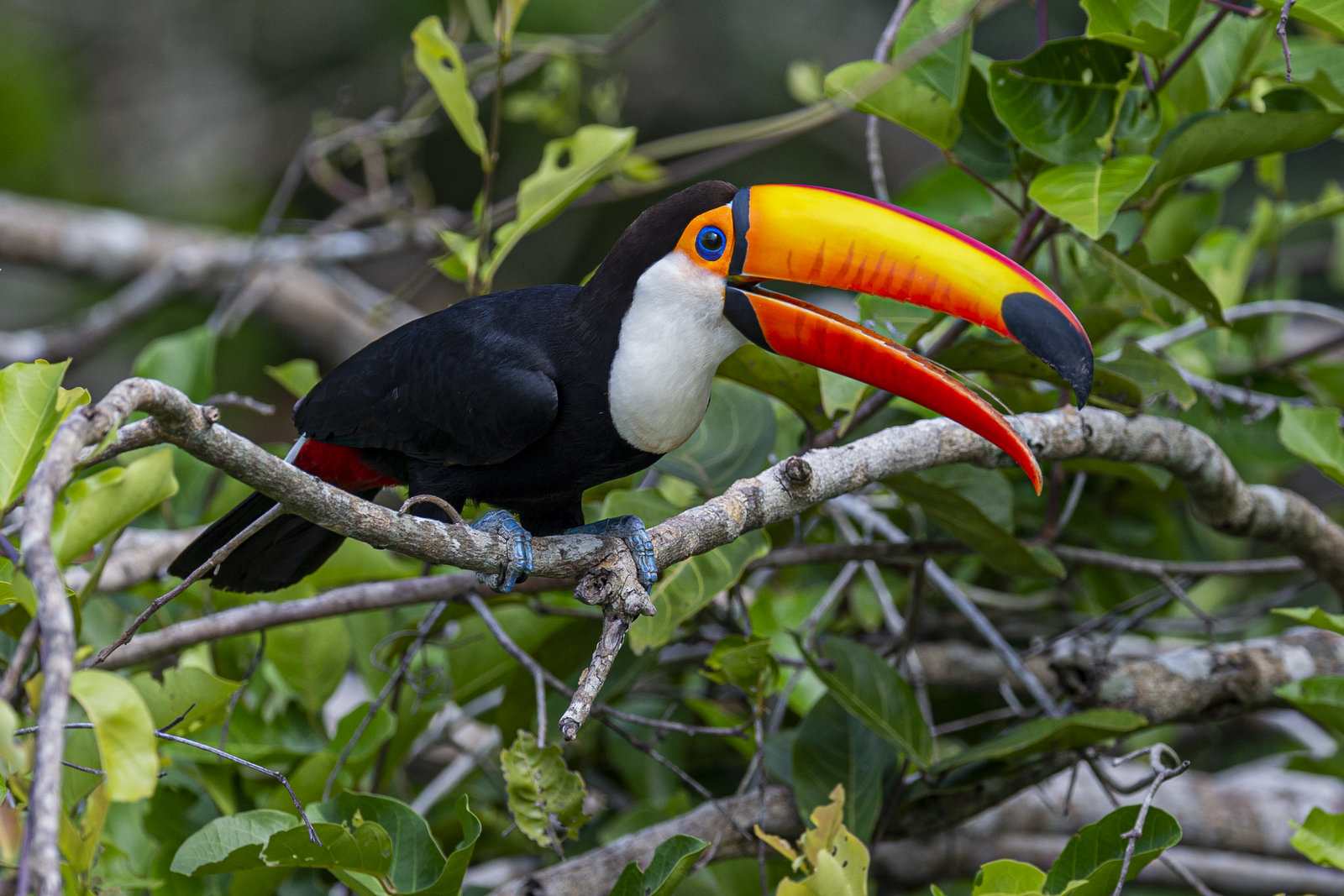 plays a role in attracting a mate, though no evidence has been found yet to support that idea. It does seem however that the bill is an effective tool for regulating the bird’s body heat. Toco Toucans are found in the tropical forests, savannas, and shrublands of South America. Living in such hot, humid climates where evaporation is slow, it can be difficult for an animal to cool off. The TT’s bill represents 30-50% of the bird’s body surface area making it the largest bill relative to body size of all birds. If the TT gets too hot he can direct more blood to pass through the beak and depending on conditions it can dissipate 25% to 4x the heat produced by the bird’s body! That is incredibly efficient and effective. For comparison, elephants use the massive surface area of their big ears to regulate body heat in the same way but they can only shed about 10% of the heat that their body produces.
plays a role in attracting a mate, though no evidence has been found yet to support that idea. It does seem however that the bill is an effective tool for regulating the bird’s body heat. Toco Toucans are found in the tropical forests, savannas, and shrublands of South America. Living in such hot, humid climates where evaporation is slow, it can be difficult for an animal to cool off. The TT’s bill represents 30-50% of the bird’s body surface area making it the largest bill relative to body size of all birds. If the TT gets too hot he can direct more blood to pass through the beak and depending on conditions it can dissipate 25% to 4x the heat produced by the bird’s body! That is incredibly efficient and effective. For comparison, elephants use the massive surface area of their big ears to regulate body heat in the same way but they can only shed about 10% of the heat that their body produces.
The big bill is also useful for feeding. The TT eats primarily fruit and that long bill allows the bird to reach distant fruit that may otherwise be too far away. Fruit on a branch that is too small to support the bird’s weight? No problem, just leeeean over and snatch it with that uber long bill. The long bill also allows the bird to sit in one place and still reach a lot of fruit – not having to move around as much saves energy. Speaking of fruit, did you notice that the beak is serrated? You can really see the notched edges of the bill in the upper image. The serrations allow the bird to peel fruit. Although these birds primarily eat figs, oranges, guavas and other fruit the long beak is also useful for catching insects and for reaching into tree cavities to catch young birds and eggs — a vital source of protein.
Ahhh, the Toco Toucan — a bird of the tropics with that Technicolor, swiss-army knife of a beak made from rainbows that acts as tool, knife, radiator and portal to other realms.
Cool bird.
Until next month…..m
Nikon D4s, Nikon 600 mm, f/4, 1/1000 sec, ISO 200
Source

